Matador Network's Blog, page 38
June 1, 2025
Where to Eat, Play, and Stay in Houston During the FIFA World Cup

In 2026, the World Cup will come to North America, and Houston will see several matches bring the global sport to Space City.
Yes, Houston is home to the NFL’s Texans, along with the Houston Roughnecks (in the UFL, or United Football League). And yes, Texas can conjure up images of Friday night lights and pigskin-armed quarterbacks. However, to think that this sprawling metropolis is only interested in one version of football would be foolish.
Houston has been the proud home of Dynamo FC for twenty years, and has grown into a loud and proud soccer town, with multiple official supporters groups rallying locals to cheer on their two-time MLS Cup-winning team. The area around Shell Energy Stadium, the Dynamo’s downtown stadium, has grown into a bustling district with soccer-centric bars. And you can bet a full-fledged community of soccer fans and players is eagerly awaiting hosting the seven scheduled matches for the 2026 FIFA World Cup.
With a robust soccer-centric bar scene, league-worthy pitches, and a larger-than-life sense of style, Houston will show World Cup visitors why everything is bigger and better in Texas.
While the Houston World Cup matches are happening at NRG Stadium, plans are underway to transform East Downtown into a full-on fiesta for locals and visitors alike, with summer 2026 activities across the well-loved locales that have helped make “Space City” into “Soccer City.”
Sporty things to do around the Houston World Cup MatchesHouston is no stranger to tourism, with sights like the Space Center Houston and the Museum District that draw visitors from around the world. But there’s far more to do and uncover, especially for fans with an inclination toward all-things-sporty.
Play at the FIFA Fan Festival
Photo: Halfpoint/Shutterstock
Hosted by the FIFA World Cup 26 Houston Host Committee with various bars, restaurants, and other venues in the neighborhood, locals and visitors alike will be invited to a 34-day-long watch party next to Shell Energy Stadium in EaDo/ With an indoor food court, interactive activities, and sponsored activities along with mini soccer fields, expect endless entertainment while watching not just the Houston World Cup games, but all 104 matches. Located in the heart of the unofficial soccer district of the city, this full-fledged fiesta will bring lively energy to an already exciting time for Houston.
Get in on a pickup game
Photo: DavideAngelini/Shutterstock
After visiting Toros HTX, every coffee shop will feel lacking to soccer fans. With two complete soccer fields, Toros offers fans of the sport a space to play pick-up games or join their leagues for weekly meet-ups, accompanied by an excellent coffee program on the sidelines. It keeps the stadium lights on until 11 PM, and opens the fields at 7 or 8 AM, making it easy to avoid the peak Houston heat even if you want to play in the middle of summer. And there’s great coffee, too.
Tour one of the US’s busiest ports
Photo: Irina Starikova1811/Shutterstock
The M/V Sam Houston Boat Tour is a glimpse into one of the busiest ports in the United States. It’s a 90-minute tour operated by the Port of Houston Authority, taking guests aboard a small vessel from 1958. You’ll learn about Houston’s economic engine, with up-close views of massive cargo ships, petrochemical tankers, and industrial terminals. There’s no guide providing interpretive commentary — just an automated audio recording with basic port facts — so it’s more about observing the scale and logistics of global trade than learning in depth. Security is tight, and reservations are required, opening on the first day of every month. It’s an excellent offbeat side trip for travelers curious about maritime infrastructure.
Beat the heat indoors
Photo: Kzenon/Shutterstock
Houston and intense heat are a practically inseparable pair, and if you get glistening just standing around, playing a pick-up match outside might sound like a nightmare. Memorial Indoor Soccer offers adults open play every Monday and Friday from 8-11PM, offering the chance to spend a perfectly cool night kicking around the ball for only $10. Leave the cleats at home and reserve a spot, or gamble with a walk-in for a casual pick-up game without having to cook under the Texan sun.
Where to eat and drink during the Houston World CupHouston’s bar scene reflects the city’s identity as one of the most diverse in the country—soccer fans can find a place to cheer whether they’re backing Mexico, Nigeria, Brazil, or the US. The city’s culinary landscape is just as global, with standout Vietnamese, West African, and Mexican food alongside classic Texas barbecue. You don’t want to miss these dining experiences.
The Phoenix on WestheimerView this post on InstagramA post shared by The Phoenix On Westheimer (@the_phoenix_brewpub)
Bringing a bit of Manchester to Montrose, the Phoenix on Westheimer is a classic British pub in the heart of Houston. With soccer memorabilia on wood-paneled walls, red tufted booths, and TVs playing every match on air, you’d be forgiven for forgetting you’re in Texas when you walk in. As a Houston Dynamo Pub Partner, expect to find any and all matches playing while enjoying a frosty pint and a fine plate of fish and chips that taste fresh from the British Isles.
The Phoenix on Westheimer: 1915 Westheimer Rd, Houston, TX 77098
Pitch 25View this post on InstagramA post shared by Pitch 25 Beer Park (@pitch25htx)
There are soccer bars, and then there is Pitch 25. Catty-cornered to the Houston Dynamo’s stadium, fans can come and go from Shell Energy Stadium, grab a beer, and play a pickup game all in one space. Former Major League Soccer And US Men’s National Team Player Brian Ching opened Pitch 25 as a beer garden with an indoor soccer pitch for guests and soccer fans to come together at. There are a hundred beers on tap with over 70 TVs, so no corner is without a view of any and all soccer games. Kids are welcome as fans of all ages can come to Pitch 25 and pick up a quick match, grab a bite of a burger or wings, and unite over the world’s favorite sport.
Pitch 25: 2120 Walker St, Houston, TX 77003
Social Beer GardenView this post on InstagramA post shared by Social Beer Garden HTX (@socialbeergardenhtx)
This isn’t your finance bro’s beer garden: Social has a counter-cultural vibe with weekly burlesque, steak, and comedy nights to satisfy all kinds of tastes. Also a Houston Dynamo Pub Partner, its rotating cast of food trucks provides bites between beers while the spacious patio and supersized projector screen plays all the big games. With a playful spirit, it’ll quickly become clear why Social Beer Garden is an excellent spot for soccer fans to unwind, especially those who find the fun soccer surprise inside the barrel-shaped urinals…
Social Beer Garden: 3101 San Jacinto St, Houston, TX 77004
True Anomaly Brewing Co.View this post on InstagramA post shared by True Anomaly Brewing (@trueanomalybrewing)
A few blocks from the Houston Dynamo’s stadium is the 2023 Texas Brewery of the Year, True Anomaly. Brewed by former rocket scientists, space suit developers, and mission managers, this is lightyears away from your buddy’s home brew, and the brilliant brewmasters use their scientific expertise to craft beers beyond the ordinary. For those looking to catch a local soccer game while experiencing FIFA, this brewery’s beers offer an out-of-this-world experience that showcases a different side of Space City.
2012 Dallas St, Houston, TX 77003: 3101 San Jacinto St, Houston, TX 77004
Where to stay during the Houston World Cup
Photo: Booking.com/Omni Hotel Houston
NRG Stadium sits in Houston’s south-central corridor, but with the city’s extensive highway system and sprawling layout, where you stay depends more on what kind of experience you’re after. For walkable neighborhoods with nightlife and food, Midtown or Montrose are good bets. The Museum District offers a quieter, more cultural stay, while Downtown puts you closer to transit options. Wherever you land, give yourself extra time to get to the stadium—Houston traffic isn’t forgiving. Booking early is essential.
Read Matador Network’s guide to the best hotels near NRG Stadium.
We hope you love the spaces and stays we recommend! Just so you know, Matador may collect a small commission from the links on this page if you decide to book a stay. Listed prices are accurate as of the time of publication.
Omni Houston HotelActing as a potential base for visiting teams, the Omni Houston Hotel could see star players lounging poolside before games. There’s a lush resort vibe radiating around the Omni, with two pools that hug the blue lagoon and trails that are home to the hotel’s two swans despite being squarely in the city. It’s 20 minutes to NRG Stadium and sits riverside with a spa, nightclub, and whiskey lounge on the property to cater to every style of traveler. Rooms start around $150 per night in the summer.
Book NowHotel ZaZa Museum DistrictHotel ZaZa offers a glimpse of the larger-than-life lifestyle Texans are known for. It’s a quick drive, train ride, or walk to several landmarks, including NRG Stadium. It also has a courtyard pool oasis that feels worlds away from the hustle and bustle of Houston’s Museum District. The ZaZa will surely be a hotspot for pre and post-game debauchery with its poolside parties, brunches, and live music for a gaudy good time. In the summer, rooms start in the high $200s per night.
Book NowDowntown Airbnb with a poolThere’s no denying that Houston can be wildly hot in the summer, but if you book this stylish Airbnb apartment, you don’t need to worry about it. You’ll have access to a big courtyard pool with plenty of lounge chairs, and at night, the floor-to-ceiling windows offer an unbeatable view of the illuminated Houston skyline.
 Book NowMore like thisTravelHouston’s Art Scene Is Wildly Underrated. Here’s Where to Play, Eat, and Stay to Check It Out.
Book NowMore like thisTravelHouston’s Art Scene Is Wildly Underrated. Here’s Where to Play, Eat, and Stay to Check It Out.
Where To Eat, Play, and Stay in Monterrey for the 2026 World Cup

All eyes will be on North America from June 11 until July 29, 2026. This will be the first year the FIFA Men’s World Cup is shared by three countries, with 16 cities hosting matches across Mexico, Canada, and the United States.
After hosting the grand opening, Mexico City passes the baton to Monterrey for three group stage games and one knockout match. Located at the foothills of the Sierra Madre Oriental in northeastern Mexico, this underrated city shocks with its state-of-the-art soccer stadium against a backdrop of the jagged Cerro de la Silla (Saddle Hill).
Inaugurated in 2015, Estadio Monterrey was the first football complex in the Americas to earn silver certification from the Leadership in Energy
and Environmental Design (LEED). Known as El Gigante de Acero (The Steel Giant), the nickname is made all the more fitting due to Monterrey’s status as Mexico’s capital of Mexico.

Photo: Monica Garza 73 /Shutterstock
Primarily an industrial outpost, the Nuevo León capital is a prime destination for offbeat travel and for exploring the wilderness that inspired Monterrey’s name: King Mountain. Inspired by ranching culture, cuisine orbits around smoky meats washed down with a Clamato con Cerveza (beer with spicy tomato juice). Oh, and seeing how this city takes football fever to a whole other level, experiencing the World Cup in Monterrey guarantees a thrill.
Regiomontanos uphold a fierce rivalry between the city’s two teams; Estadio Monterrey is the stomping ground of C.F. Monterrey (Rayados) whereas Tigres UANL are based at Estadio Universitario. It’s worth noting that Monterrey Stadium is actually located in Guadalupe, another city within the Greater Metropolitan Area of Monterrey. Exposición (yellow line) is the closest Metrorrey station.
The best neighborhoods to eat, play, and stay in Monterrey for the 2026 FIFA World Cup: Centro, Guadalupe, and San Pedro Garza García
Photo: LukeandKarla.Travel /Shutterstock
Centro is the best place to stay in Monterrey during the World Cup to experience a piece of everything the city is known for. This busy downtown area is where you’ll find the most accommodation, restaurants, and sights. Served by the Metrorrey, this is a convenient base for getting out to the stadium and finding watch parties in bars. Opt to stay close to Barrio Antiguo for proximity to nightlife and near Fundidora Park if you’re traveling with kids.
A city in its own right, Guadalupe is the location of Monterrey’s World Cup stadium. Staying in Guadalupe makes sense if being close to the grounds is a priority; there are Airbnbs within walking distance of the soccer stadium. Another perk is that many rentals have free parking and barbecue facilities which makes staying in for dinner all the more desirable.
San Pedro Garza García is another municipality under the wider metropolitan area. West of Centro, it’s a longer commute to the stadium—around 30 minutes in an Uber. However, this upscale area has great dining, luxury accommodations, and easy access to the mountains. The best neighborhoods to stay in for the World Cup are around Plaza Fiesta San Agustín and Fashion Drive.
Where to eat and play in Monterrey
Photo: eskystudio /Shutterstock
Barrio Antiguo Market will be a nucleus during the FIFA Men’s World Cup. Stalls serve dishes typical of Monterrey including cabrito (roasted goat) and carne asado (barbecued meat) whereas all screens will be occupied with the latest games. Warm up for the occasion with a bike tour of the Barrio Antiguo. This is a fun way to learn Monterrey’s history from a bilingual guide—few Regiomontanos speak English.
For those staying in Centro or San Pedro, Colton’s is a legendary sports bar in Obispado with screens aplenty, shareable plates, and great beer. Public spaces such as Macroplaza and Fundidora Park are slated to be hubs during the tournament.
Beyond the city, those traveling to Monterrey for the World Cup can venture to the mountains to release any tension. This aquatic hiking experience in Cerro del Agujerado introduces a gentle dose of canyoning.
Where to stay in Centro, Monterrey, for the World CupWe hope you love the spaces and stays we recommend! Just so you know, Matador may collect a small commission from the links on this page if you decide to book a stay.
Downtown Monterrey Airbnb with a rooftop pool Photo: Airbnb
Photo: Airbnb Photo: Airbnb
Photo: Airbnb Photo: Airbnb
Photo: Airbnb Photo: Airbnb
Photo: AirbnbSee more photos
This centrally located condo rental for couples is steps from the Macroplaza, the Barrio Antiguo, and the Monterrey Metro. It has all the amenities needed for a weekend or longer stay plus the added perks of a rooftop pool and gym. Those planning on sticking around for the fortnight of games will also appreciate the building’s 24-hour co-working space.
Two guests, one bedroom
Nightly rates from $86 per night
 Photo: Airbnb
Photo: Airbnb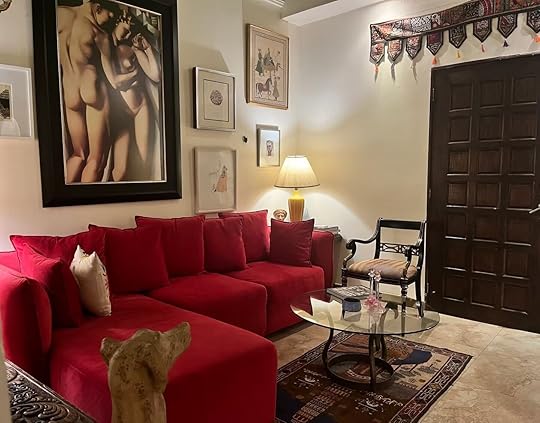 Photo: Airbnb
Photo: Airbnb Photo: Airbnb
Photo: Airbnb Photo: Airbnb
Photo: AirbnbSee more photos
This restored building in the old quarter strikes the perfect balance of antiques and mod-cons. The apartment has one comfy bedroom opening out directly onto an ornate patio with a breakfast table under the vines. Within walking distance of sports bars, grills, and the Metrorrey, this is a winner.
Two guests, one bedroom
Nightly rates from $66
 Photo: Airbnb
Photo: Airbnb Photo: Airbnb
Photo: Airbnb Photo: Airbnb
Photo: Airbnb Photo: Airbnb
Photo: AirbnbSee more photos
This upscale condo in the Puntacero Building of Monterrey has three double bedrooms, two bathrooms, and a gourmet kitchen. The private balcony and shared rooftop pool have killer views. The location hits the sweet spot between the entertainment venues of Centro and not being too far from the football stadium.
Nine guests, three bedrooms
Nightly rates from $215
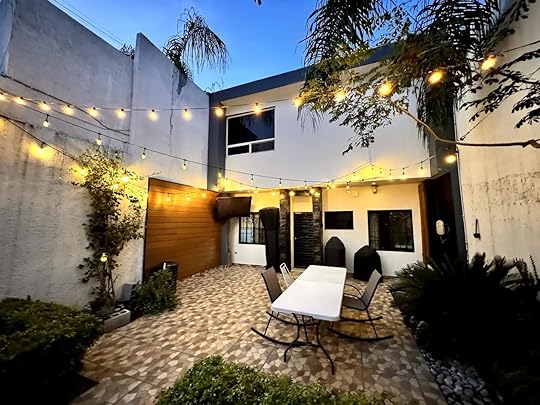 Photo: Airbnb
Photo: Airbnb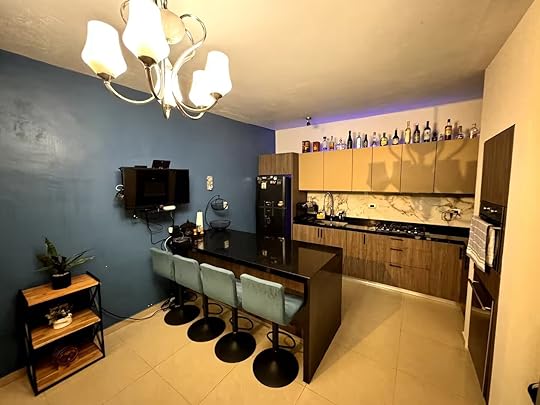 Photo: Airbnb
Photo: Airbnb Photo: Airbnb
Photo: Airbnb Photo: Airbnb
Photo: AirbnbSee more photos
This Guest Favorite Airbnb near Monterrey Stadium works for couples, families, and groups. There’s one queen bed plus two pull-out couches and generous floor space. The kitchen has a breakfast bar with a television and the barbecue patio adds a special something. Free parking and laundry facilities take care of the practicalities.
Six guests, one bedroom
Nightly rates from $139
 Photo: Airbnb
Photo: Airbnb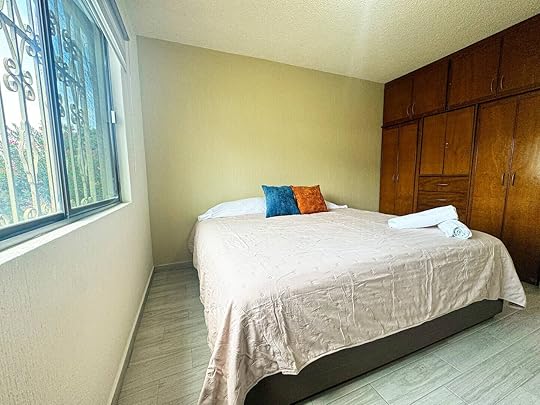 Photo: Airbnb
Photo: Airbnb Photo: Airbnb
Photo: Airbnb Photo: Airbnb
Photo: AirbnbSee more photos
This family-friendly vacation home has three sizable bedrooms and ample communal space. For those who like to cook (or bring home takeout), there’s a fully-equipped kitchen and a patio with a grill. Monterey’s football stadium is a 15-minute walk and the trailhead for Cerro de la Silla is three blocks away.
Six guests, three bedrooms
Nightly rates from $128
 Photo: Airbnb
Photo: Airbnb Photo: Airbnb
Photo: Airbnb Photo: Airbnb
Photo: Airbnb Photo: Airbnb
Photo: AirbnbSee more photos
Situated in the upscale Distrito Armida community, this three-bedroom rental is convenient for getting around downtown Monterrey and Guadalupe. All rooms have floor-to-ceiling windows with mountain or city views and the amenities are top-notch. The building has a shared pool, free parking, and restaurants right on the doorstep.
Six guests, three bedrooms
Nightly rates from $541
 Photo: Airbnb
Photo: Airbnb Photo: Airbnb
Photo: Airbnb Photo: Airbnb
Photo: Airbnb Photo: Airbnb
Photo: AirbnbSee more photos
Wake up to views of Monterrey’s iconic mountain from this swanky one-bedroom condo in the heart of San Pedro. Impeccably furnished to a hotel standard, the apartment has a balcony and a large TV for watching the World Cup. Shared amenities include a pool, hot tub, gym, and a games room.
Three guests, one bedroom
Nightly rates from $281
 Photo: Airbnb
Photo: Airbnb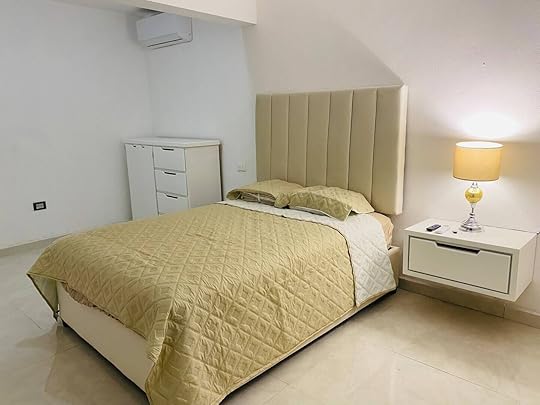 Photo: Airbnb
Photo: Airbnb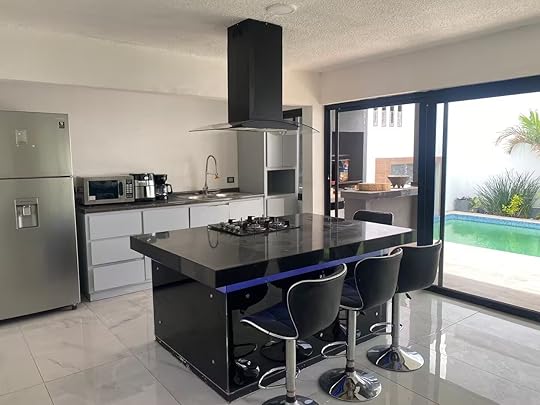 Photo: Airbnb
Photo: Airbnb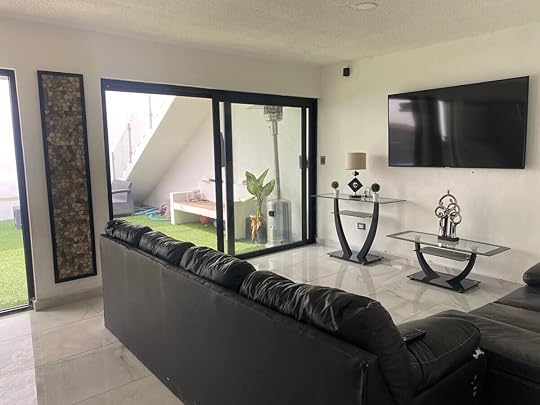 Photo: Airbnb
Photo: AirbnbSee more photos
Act quickly to secure this awesome Airbnb near Monterrey’s World Cup stadium: it has a private heated pool and a backyard movie theater for streaming the games. There’s a large TV in the lounge, too, in eyeline of the kitchen island. You’ll spy the summit of Cerro de la Cilla from the yard and appreciate the free parking.

Six guests, three bedroom
Nightly rates from $257
May 31, 2025
Where to Play, Stay, and Eat in Philadelphia During the FIFA World Cup

In 2026, Philadelphia, known throughout the world for its very passionate sports fans, will be hosting the biggest soccer tournament there is: the FIFA World Cup. While 16 cities will host games, it’s Philly’s team (the Philadelphia Union), sits in at the top of the MLS rankings. That’s sure to make the city a draw for soccer fanatics traveling from far and wide to see the matches in person.
The Philadelphia World Cup matches will take place at Lincoln Financial Field, home of the NFL’s Eagles. Luckily for supporters who want to do a little sightseeing before and after the games, the stadium is within the city limits, less than four miles from the downtown area. And you won’t have to hoof it to the stadium, because a 15-minute Uber trip (or a 40-minute SEPTA subway or bus ride) will take you straight there from downtown. That means you can see Liberty Bell in the morning and catch a match in the afternoon without any fuss.
In June and July 2026, Philadelphia will host a total of six matches of the 2026 FIFA World Cup, including five group stage games (June 14, 19, 22, 25, 27) and one knockout-stage match on July 4. And what’s more iconic than spending Independence Day watching sports in Philly, the “birthplace of America”? Nothing, that’s what.
While , you should still plan ahead. Lincoln Financial Field can host 69,000 people, and they’ll all be in the city at the same time as you. To make the most of your time in Philly, here’s where to eat, play, and stay during the 2026 FIFA World Cup. Just don’t wait too long to make those bookings.
We hope you love the spaces and activities we recommend! Just so you know, Matador may collect a small commission from the links on this page if you decide to book a stay or tour. Listed prices are accurate as of the time of publication.
Sporty things to do in PhiladelphiaBecause you’re in Philly to watch high-stakes soccer games in one of the most sports-obsessed cities in the US, you’re probably into most-things-athletic. Fortunately, there are plenty of active things to do in Philly, including fun exercise sessions, touring the city on a bike, visiting sports venues, or even catching an MLB game. But if you do like more traditional tourist draws, there are always cheesesteaks to chow on and Independence Hall to check out.
Take a Rocky-inspired high-intensity bootcamp
Photo: Airbnb
Rocky Balboa running through the city of Philadelphia all the way up the stairs leading to the Philadelphia Museum of Art is a recurring scene from the Rocky movie franchise — one that has since become iconic.
If you want to be Rocky Balboa for a short time, you can book a 90-minute high-intensity bootcamp with performance coach and physical therapist Joe at this very same spot. You’ll warm up, climb the stairs with some added challenges thrown in, and celebrate your undeniable athleticism à la 1976 Sylvester Stalone (i.e., jumping up and down with your arms raised to the heavens). Not only will you complete a solid and fun workout, but you’ll also check one of Philadelphia’s must-sees off your list.
While you’re there, snap a picture with the large bronze Rocky statue at the bottom of the museum stairs. It was originally created for Rocky III in 1982 and is now one of the most visited monuments in the city.
Catch a live show
Photo: AAR Studio/Shutterstock
The Philadelphia Flyers are Philly’s beloved NFL team, and during hockey season, they play at the city’s Wells Fargo Center. While hockey is on a break during the summer, you can still check out the impressive stadium by grabbing tickets for whatever is happening at the stadium. The 2026 summer lineup hasn’t been announced, but events in 2025 include a Cirque du Soleil show, stand-up comedians, A-list musical artists, and family-friendly stage acts sure to drive kids crazy. Tcikets for events can be as low as $20 or into the thousands if you want primo seats to the biggest artists touring today.
Take a guided tour of the city by bike or on foot
Photo: Viator
If you’re keen to combine exercise with sightseeing, you have two options: you can tour Philly by bike, or on foot with Viator. Both tours are highly rated and will take you to see the city’s most famous landmarks and provide expert commentary for a comprehensive visit. At 3.5 hours, the bike tour is a little more involved than the 1.5-hour walking tour, but if your time in the city is limited and you’re not afraid of a little physical activity, it’s a good option.
See the best baseball players in action
Photo: hannahsnyder/Shutterstock
2026 will be a big year for Philadelphia. On top of hosting the FIFA World Cup and celebrating the 250th anniversary of American Independence, the city will also host the MLB (Major League Baseball) All-Star Game. The event, which is a game between the best players in the American League (AL) and the National League (NL), will take place at Citizens Bank Park, home of the Phillies, in July 2026. While tickets for the game will be hard to get, there’ll be a host of all-star sporting events around the city for those who aren’t at the games.
If you can’t make it to Citizens Bank Park for the all-star game, book one of the regularly scheduled, 75-minute tours of the ballpark for just $25 per person. While there, make sure to check out the two Liberty Bell replicas: the 19-foot-tall Veterans Stadium Liberty Bell sitting outside of the stadium, and the 52-foot-tall Liberty Bell located in the right-center field of Citizens Bank Park. The bell inside the stadium lights up and rings when the Phillies score a home run or win.
Where to eat and drink during the Philadelphia World Cup matchesIf you want to catch all the other FIFA World Cup 2026 matches taking place in the US, Canada, and Mexico while you’re in Philadelphia, you’d better find a good sports bar. Preferably, one that also serves food, so you’ll never have to step away from the screens. These three bars and pubs are great places to start.
Drinker’s PubView this post on InstagramA post shared by Drinkers Pub (@drinkerspub)
Drinker’s is a neighborhood dive bar beloved by locals who want a friendly, no-frills place to enjoy a couple of cheap draft beers and watch whatever game is playing. There are several high-definition TVs on the walls for that purpose, but don’t expect anything very high tech or flashy – Drinker’s is not a pretentious establishment. The food menu is equally simple, with only salty, cheesey, and fried plates on offer such as nachos, fried dill pickles, wings, and burgers among others. There’s a pool table so you can do something during the half-time break. Drinker’s is located in the very popular Rittenhouse neighborhood.
Drinker’s: 1903 Chestnut St, Philadelphia, PA 19103, USA
Giovanni’s Bar & GrillView this post on InstagramA post shared by Giovani's Bar & Grill (@giovanisbarandgrill)
Also in the Rittenhouse neighborhood, and also on Chestnut Street, family-owned Giovanni’s Bar & Grill is a casual spot famous for its friendly and attentive staff and its great food. While it looks like a pizza shop from the street, you’ll find a whole bar in the back. There are large screens on the wall so you won’t miss a minute of the matches. The menu is extensive and includes a good variety of pasta, calzones, wings, burgers, and more. And it’s all not beers and cider being served at Giovanni’s, the bar staff makes excellent cocktails, too.
Giovanni’s Bar & Grill: 1533 Chestnut St, Philadelphia, PA 19102, USA
Glory Beer Bar & KitchenView this post on InstagramA post shared by GLORY Beer Bar & Kitchen (@glorybeerbarandkitchen)
Not too far from the other bars on this list is Glory Beer Bar & Kitchen. It’s a local favorite, especially for beer lovers and connoisseurs. While still very casual, Glory Beer Bar & Kitchen is a step up from Drinker’s and Giovanni’s, serving 36 beers on tap, expertly made cocktails, and excellent food that nobody in their right mind would call bar food (think French onion soup, pork schnitzel, charred octopus, and flourless chocolate cake). The bar has a few big TV screens showing whatever important game is on, so you won’t miss any of the Philadelphia FIFA World Cup matches while there. Glory Beer Bar & Kitchen hosts regular events as well, including live music, comedy shows, and even burlesque events.
Glory Beer Bar & Kitchen: 126 Chestnut St, Philadelphia, PA 19106, USA
Where to Stay during the Philadelphia World Cup matches
Photo: Airbnb
Because Lincoln Financial Field is located within the city limits and is easily reachable by public transportation, you have plenty of easy options when it comes to Airbnbs. The only problem you’ll encounter is availability. June and July 2026 will be very busy months in Philadelphia — and that’s not just because of the FIFA World Cup. It’s also the 250th anniversary of America becoming a country, the MLB All-Star Game, and the PGA championship. Don’t procrastinate and book early. (Note that, at the time of writing, the Airbnbs listed below are all available for booking between June 13 and July 5, 2026.)
Characterful townhouse near Rittenhouse SquareClose to all the best bars, restaurants, boutiques, and attractions, this modern townhouse can accommodate up to four guests in its two bedrooms and two bathrooms. There’s a fully equipped kitchen and a fancy freestanding tub (for relaxing after a tense soccer match). The patio in the backyard is private and the perfect spot to hang out with a drink at the end of the day — unless you prefer the basement, with a comfortable couch and a large TV so you can catch the non-Philadelphia World Cup matches if you don’t feel like going to a sports bar. It’s about 35 minutes from the stadium on SEPTA.
Book NowLarge, modern home for groups and familiesSouth of Philly’s Gayborhood, this charming brick house can sleep up to eight guests in three bedrooms, making it a good pick for traveling groups. It’s elegant, cozy, and well appointed, with a fully equipped kitchen, a small patio to enjoy some fresh summer air, and a mosaic by famous American artist Isaiah Zagar just outside the front door. It’s only a 25-minute walk to the Liberty Bell, or 35 minutes to the stadium on public transportation.
Book NowA modern loft for lovers of art (and Rocky)If you’re keen to stay somewhere a little offbeat during your time in Philly, this super-modern and art-filled loft might just be the place for you. As it’s a studio, it only sleeps two, but it’s filled with so much light, color, and plants that it feels a lot bigger. Take the time to look at all the art pieces on display, especially the Rocky-themed ones. Art Tower, as the building is known, is around 40 minutes by SEPTA from the stadium. 
Where to Eat, Play, and Stay in Miami During the FIFA World Cup

A few Fourths of July ago, Brazil was playing Colombia during the World Cup. But in Miami, you’d have never known it was Independence Day in the US. Flags from the two competing countries hung out apartment balconies, waved from cars, and covered the bodies of rabid fans as they packed the city’s bars and restaurants. Because in the “Capital of Latin America,” as Miami often calls itself, a World Cup match between South American powerhouses is bigger than any national holiday.
Long before Lionel Messi took his talents to South Florida, Miami was soccer mad. International friendlies draw bigger crowds than the Miami Dolphins, and impromptu parades erupt every time a Latin American team wins a major tournament. That makes the Magic City especially well-suited to host the World Cup, and if you’re visiting from out of town, you’ll find an international experience unlike any other North American venue.
Hard Rock Stadium, where the Miami World Cup matches will be played, is actually nowhere near the Miami you see on TV. Instead, it’s situated about halfway between Miami and Ft. Lauderdale in Miami Gardens. So other than a pregame tailgate, you probably won’t be spending much time near the stadium. That leaves the entirety of your trip to explore Miami and all it has to offer, from world-class bars and restaurants to colorful neighborhoods. Here’s a look at all the best things to do in Miami during the World Cup, and how to fill all your time when you’re not at the stadium.
The best sporty things to do in MiamiMiami is a perennial magnet for travelers, probably for its dazzling blend of cultures, vibrant arts, great parks and outdoor spaces, and a food scene that’s as diverse as its population. While many visitors make a beeline for iconic attractions like the pastel-hued Art Deco Historic District and the sun-soaked stretches of Miami Beach, those coming for the World Cup will find the city has much more to do beyond just its postcard-ready sights.Admire the artsy Wynwood

Photo: MDV Edwards/Shutterstock
Wynwood is a fascinating study in rapid urban development, as it’s transformed from industrial wasteland to artists’ enclave to buzzy mixed-use neighborhood in just over 15 years. Though Wynwood’s lost some of its grit, it’s still a colorful maze of provocative murals, where the ever-changing walls create an outdoor museum every time you visit. Start your visit at the Wynwood Walls, the neighborhood’s only set of permanent installations, then branch out and explore the neighborhood’s boutiques, bars, and eclectic restaurants.
Stroll through Calle Ocho

Photo: Fotoluminate LLC/Shutterstock
Once the vibrant main artery for the heart of Miami’s Cuban American community, Calle Ocho is now a mix of Latin American cultures. And during the World Cup, it’ll be teeming with fans from all over Central and South America.
Any visit to this iconic street must begin at Ball and Chain, a onetime after-hours showplace for Black jazz musicians that’s been restored to its former glory as one of Miami’s best places for live music. After enjoying a mojito or two, venture to one of Calle Ocho’s Cuban restaurants, from seafood at Sala’o to more traditional stuff at Old Havana. You’ll also find no shortage of cigar shops, though is a personal favorite of many locals for posting up and people watching. Next door, pop your head into the Cubaocho Museum, home to the biggest collection of pre-revolutionary Cuban art outside the island.
Explore a new beach
Photo: Jason Finn/Shutterstock
South Beach is Miami’s most famous strip of sand, and you’d be remiss not to block out some time to lay out then stroll among the world’s largest number of art deco buildings. But if you’re visiting Miami to relax in paradise between World Cup matches, make your way over to Key Biscayne for at least one afternoon instead. The island south of downtown has Miami’s best beaches for relaxation, from the soft white sands and shallow waters at Crandon Park to the old Floridian nature at Bill Baggs Cape Florida State Park. The latter is also home to a lighthouse dating back to 1825, and a cool beachfront bar at The Cleat that feels a world away from Miami’s high-rises. Play at the Frost Science Museum

Photo: Miami2youPhoto/Shutterstock
You’d be forgiven for thinking a science museum would be an odd stop during a World Cup trip. But the Frost Science Museum in Downtown Miami is unlike any other in the world, where you can pet stingrays with a panoramic view of the city, walk through a living coral reef, and visit a mockup of the Everglades. It’s an immersion in the subtropical ecosystems that make up South Florida, and a great way to spend an afternoon if you’re traveling here with your kids. There’s also a 67-foot-wide planetarium to cool off when the weather gets hot (as it likely will during the Miami World Cup games), and laser shows on select Friday nights.Get in on a game

Photo: Nomad_Soul/Shutterstock
For avid footballers who enjoy playing soccer as much as watching it, pop into Brickell Soccer and Padel on SW 8th Street. It’s bustling with pickup games near every hour of every day, with a diverse group of players not just from the States and Latin America, but all over the world.
Catch the Miami Marlins in action

Photo: Miami Marlins/Rich Storry/Getty Images
Baseball? During a soccer trip? Well, if you’re from outside the US. and want to check out America’s national pastime, LoanDepot Park is one of the best kept secrets in Major League Baseball. Because crowds tend to be small, tickets are affordable for nearly every game. And during the summer, the roof is typically closed, so every game is dry and pleasantly air-conditioned, even on the hottest of South Florida days. The ballpark also has frequent pre-game events on Saturday nights like beer festivals and tequila tastings, and there’s a full-service sports bar in left field that parties from before the game begins until after the last pitch.Where to Eat and Drink for World Cup in Miami
Miami’s soccer culture spills into its bars and watch parties that reflect the city’s Latin American and Caribbean influences. From Cuban cafeterías to Colombian arepa joints and upscale seafood spots, the city’s food scene is a major part of its global identity. These are a few of the best places to eat and drink when you’re in town for the Miami World Cup matches, or, you could map out a day-by-day plan for visiting each of the best soccer bars in the 305.
Fritz and Franz BierhausView this post on InstagramA post shared by FritzandFranzBierhaus (@fritzandfranzbierhaus)
When it comes to watching the World Cup in Miami, this German-style beer hall in Coral Gables is a Miami icon. Fritz and Franz is as close to a European-style game watch experience as you’ll find in South Florida, typically extending the party out its patio and the surrounding streets. The food is your typical mix of schnitzels and pretzels, with some traditional German beers mixed in. Even when Germany isn’t playing, you’ll find the place packed with fans from whichever country is.
Fritz and Franz Bierhaus: 60 Merrick Way, Coral Gables, FL 33134
BotecoView this post on InstagramA post shared by SkySquadAerial (@skysquadaerial)
Boteco is the epicenter of Brazilian football fever in Miami, especially during the World Cup. The lively Miami Beach restaurant is best known for its Brazilian steaks, bacalaos, and expertly mixed caipirinhas. On match days, Miami’s Brazilian community packs the house to cheer, dance, and samba their way through high-energy games. It’s not the place for a quiet meal, but when Brazil is playing, nowhere else in the city matches the energy.
Boteco: 916 NE 79th St., Miami, FL 33138
Mickey Burke’sView this post on InstagramA post shared by Mickey Burkes (@mickeyburkesmiami)
Stroll by this modern South Beach Irish bar on most Sunday mornings, and you’ll find Premier League fans packed inside watching games from across the pond. Mickey Burke’s is the home-away-from-home for soccer fans from abroad even when it’s not World Cup time. During the Cup, it’s the Beach’s best spot to watch games – and enjoy a short rib poutine or bonchon cauliflower with your early morning pint.
Mickey Burke’s: 1265 Washington Ave, Miami Beach, FL 33139
LC’s Roti ShopView this post on InstagramA post shared by PofV (@princessofvisconde)
The area around Hard Rock Stadium isn’t a particularly great one for restaurants, but if you want a true taste of the Caribbean, hit up this little roti shop in a nondescript Miami Gardens strip mall. The Trinidadian owners make the place feel authentic to the islands, where cash is the only way to pay and cricket and football are the only things on TV. Service isn’t fast, but the food is fantastic, and it’ll put you in an appropriately international mindset before heading to the match.
LC’s Roti Shop: 19505 NW 2nd Ave, Miami Gardens, FL 33169
Where to stay for the World Cup in Miami
Photo: Booking.co/JW Marriott Turnberry
Since Hard Rock Stadium is about 30 minutes north of downtown, where you stay in Miami depends more on what kind of trip you want. Stay near the stadium if soccer is your sole focus, sure – but if you want to experience the city during your trip, picking something closer to Miami will be a lot more fun. Booking early is essential, especially around match days.
Click here to read Matador Network‘s full guide to the best hotels near Hard Rock Stadium.
We hope you love the spaces and stays we recommend! Just so you know, Matador may collect a small commission from the links on this page if you decide to book a stay. Listed prices are accurate as of the time of publication.
JW Marriott TurnberryIf you’ve got the budget, the JW Marriott Turnberry is hands-down the best place to stay for the Miami World Cup matches. Not only is it relatively close to Hard Rock Stadium, as opposed to South Beach or Downtown, but it also has a multi-story spa and an onsite water park at Tidal Cove. Summer rates start around $315 per night in the summer.
Book NowPelican HotelIf you’re looking to stay by the beach, check out this cool Ocean Drive boutique hotel from Diesel Jeans founder Renzo Rosso. Its themed rooms are exquisitely and tastefully designed, from the Mad Men-inspired Executive Sixties to the “Up, Up In The Sky Suite”, which repurposes airplane parts as decor. The Italian restaurant downstairs is also among Miami Beach’s best. Rates in the summer start around $200 per night but can vary quite a bit.
Book NowSonesta Miami AirportFor those just popping in for the Miami World Cup who prefer to stay closer to MIA, the newly-redone Sonesta is a great choice. The onsite restaurant and bar makes a churrasco steak bowl that could rival any South American steakhouse in Miami, and the flatscreens behind the bar seem to always have a soccer match on. Rates start around $120 per night in the summer. 
May 30, 2025
Where to Eat, Play, and Stay During the Atlanta World Cup Games

I was in high school in the early 2000s when Atlanta’s newest soccer team, the Silverbacks, began building their soccer facility right next to the intersection where I-75 and 285 meet – a place ATLiens call “Spaghetti Junction.” At the time, I also happened to call this area my backyard, as my family lived in the Embry Hills neighborhood across the street.
“Soccer? In Atlanta?!” I remember being puzzled by the presumption that Atlanta sports fans would take to soccer. Atlanta has always been known for its robust fandom for college football and professional baseball. A few years earlier, we’d played host to the world for the 1996 Summer Olympic Games, but I never imagined enough interest in soccer to support the world’s most popular sport.
But there were lots of things teenage me had yet to learn – among them, that Atlanta has more than a 100-year history of enthusiastically supporting competitive soccer. That’s evident today with fandom for our Major League Soccer team, Atlanta United FC, which routinely sells out stadiums. But that following started long before the Silverbacks, going back to Atlanta’s older clubs called the Atlanta Chiefs (in the NASL from 1967 to 1973) and the Atlanta Ruckus (1995-1996). In 1968, the Chiefs brought Atlanta its first national championship in any sport, and in its short tenure, the Ruckus went to the championship series (but ultimately lost to the Seattle Sounders).
Even at a recreational level, soccer is integral to the fabric of the A. The nonprofit organization Soccer in the Streets, at the core of Atlanta’s soccer culture, organizes youth leagues to introduce Atlanta kids to the sport. It also hosts adult pickup games every Monday, Wednesday, and Friday evenings. In 2016, Soccer in the Streets made history by creating the world’s first soccer field project inside a train station. From there, the initiative spread, and now Atlanta has mini soccer fields next to five of Atlanta’s train stops, giving kids the opportunity to ride the train to play another neighborhood’s team.
In 2025, Atlanta hosts the sports world again, but this time for the city’s first-ever . It’s the perfect time for Atlanta to hold the spotlight again. Mercedes-Benz Stadium, built in 2017, is arguably the best soccer stadium in the country. And love for the game continues to grow. Walk into any restaurant or neighborhood and you’re bound to see someone rocking Atlanta’s five stripes, or even supporting their favorite Premier League team.
Whether you’re coming to watch the Atlanta World Cup matches in 2026, the Club World Cup matches in 2025, or just soaking in some FIFA tournament excitement, there are plenty of places to get into the spirit. Here are a few places that put soccer front and center.
Sporty things to do in AtlantaAtlanta regularly draws tourist crowds for its cultural diversity and thriving arts and food scene. While visitors often flock to must-see attractions such as the Georgia Aquarium, the Atlanta Botanical Garden, and the iconic Centennial Olympic Park, those in town for World Cup games shouldn’t limit themselves to just the tried-and-true sights.
Take photos with the Telstar soccer sculpture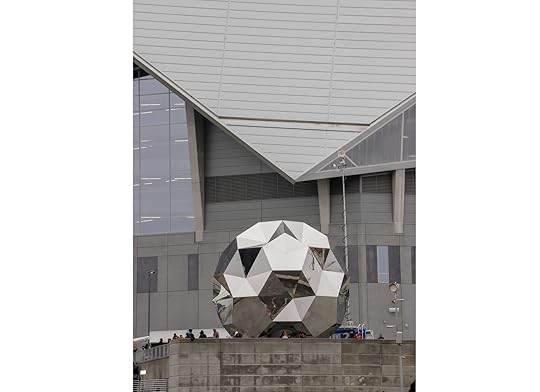
Photo: Lee Reese/Shutterstock
This 35-foot-tall metal soccer ball just outside Mercedes-Benz Stadium is the largest sculpture of its kind in the US. The Telstar sculpture pays homage to the iconic Adidas Telstar ball used in the FIFA World Cup Finals in Mexico City in 1970. The mirror-like artwork has all the appeal of sculptures like Chicago’s The Bean, but fewer crowds (unless you’re seeing it on game day). Go at night to see the ball light up with internal lights.
Telestar sculpture: 1 AMB Dr NW, Atlanta, GA 30313
Check out the Atlanta United murals
Photo: Atlanta United FC/ (Art by Fabian Williams)
Atlanta United partnered with several artists to paint murals across the city. The murals depict people emblematic of the “Spirit of 17,” or AU’s trailblazing spirit of continuously showing up for community. The mural in Atlanta’s Westview neighborhood, created by artist Fabian Williams, highlights Jay Carter and Oronike Odeleye, the founder and director of Atlanta’s One Music Fest. Fabian depicts both with an Atlanta halo that gives a nod to the city and to the soccer club.
There’s a driving tour available of all the murals on the United FC website, as well as nine other walking tours of various art collections throughout Atlanta, like the 1.5-mile tour of East Atlanta art or the three-mile tour through one of the largest sculpture parts in the southeastern US.
Pick up a new retro jersey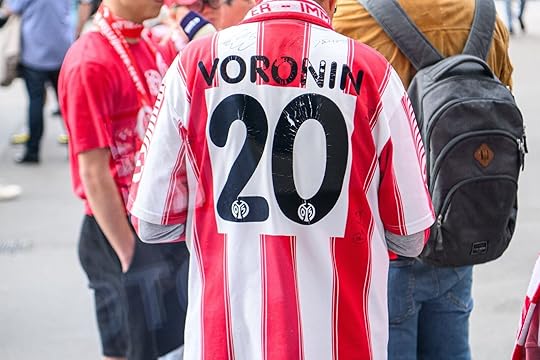
Photo: Vitalii Vitleo/Shutterstock
For the soccer enthusiast who enjoys the prestige of a vintage look, Rare and Retro Soccer in Little 5 Points is your best bet for finding rare and unique jerseys and other soccer memorabilia. Keep an eye out for everything from a recent Miami jersey from the GOAT timeself, Lionel Messi, or a twenty-year-old Swedish Ibrahimović jersey. This is your home to discuss the love of the game and all the pieces that help bring your best stories alive.
Rare and Retro Soccer Atlanta: 401 Moreland Ave NE, Atlanta, GA 30307
Explore Silverbacks Park
Photo: Anton Vierietin/Shutterstock
What was once the home to an earlier version of Atlanta men’s soccer has now transformed into a space for adults to play recreational matches, watch the game, and grab a bite and beer at Willie B’s Bar and Grill. You can watch Apotheos FC (Atlanta’s semi-pro team) play at Silverbacks Park, or even catch a rugby or an ultimate frisbee game, depending on the night.
If you’re keen to get on the field in town, check out Sons of Pitches. It arranges pick-up soccer games throughout the city every week, with reasonable drop-in rates of $5-$20 per person. Make sure to sign up in advance so the organizers can make sure they have the correct number of players.
Silverbacks Park: 3200 Atlanta Silverbacks Way, Atlanta, GA 30340
Walk around the Arthur M. Blank US Soccer National Training CenterOpening in Spring 2026 in Fayetteville, about 30 miles south of Atlanta, this new facility will serve as the home of US Soccer, making it the epicenter for growing the game across the country. The 200-acre facility will have more than a dozen soccer fields and will be the place for the country’s top soccer players to train. The full list of offerings for visitors has not been released yet, but this is a space to watch for any fan of the sport.
Arthur M. Blank U.S. Soccer National Training Center: 910 Veterans Pkwy, Fayetteville, GA 30214
The best places to eat and drink during the Atlanta World Cup gamesAtlanta has a lively soccer bar scene that mirrors the passion and diversity of its fans, and a global food scene that draws from international and southern influences. But while Southern cuisine and soul food are deeply rooted in the city’s history and daily life, it’s hardly the only choice. Here’s where to watch the Atlanta World Cup games and sample the city’s best flavors.
The Brewhouse CafeView this post on InstagramA post shared by Men in Blazers (@meninblazers)
Brewhouse is one of the first true soccer bars to open in the Southeast and now, word’s gotten out about how epic this place is: the hugely popular Men in Blazers podcast named it America’s best soccer bar. Grab a traditional English breakfast while elbow-to-elbow with Premier League fans, or grab a bite and head to the massive patio, one of the largest in the area. Brewhouse Cafe is teeming with regulars but always has space for a new fan.
The Brewhouse Cafe: 401 Moreland Ave NE, Atlanta, GA 30307
Fadó Irish PubView this post on InstagramA post shared by Fado Irish Pub (@fadoirishpub)
Pronounced f’doe, Fadó is a classic Irish pub that’s home to watch parties for both Atlanta United and Liverpool. Fadó also hosts fantasy Premier League contests, all while providing a classic pub atmosphere to catch all the games. Atlanta has two locations in Midtown and Buckhead, with each serving more American bar food than traditional Irish fare.
Fadó Irish Pub: 273 Buckhead Ave or 933 Peachtree St NE
The Midway PubView this post on InstagramA post shared by Midway Pub (@midwaypub)
This East Atlanta hangout is home to one of Atlanta United’s biggest soccer clubs, Footie Mob. It’s a casual sports bar with a handful of TVs, plus a large patio. The menu has typical bar food bites, but the execution makes the menu stand out. The fish and chips, smashburger, and wings are all fantastic.
The Midway Pub: 552 Flat Shoals Ave SE, Atlanta, GA 30316
El TesoroView this post on InstagramA post shared by EL TESORO (@eltesoroatl)
This part taqueria, part Edgewood neighborhood gathering spot is a fun place to watch a soccer match, especially when Atlanta United is on the screen. There’s an extensive menu with favs like tortas and birria tacos, as well as a big outdoor (and dog-friendly) patio with lawn games and place for kids to run around.
El Tesoro: 1374 Arkwright Pl SE, Atlanta, GA 30317
Where to stay for the Atlanta World Cup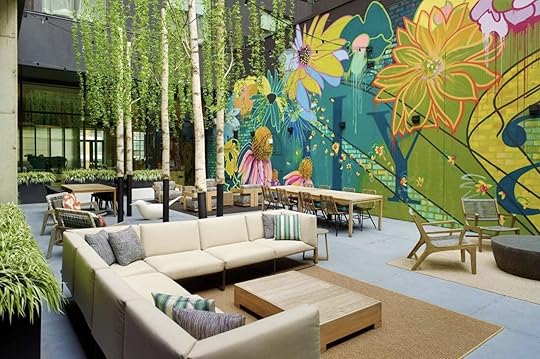
Photo: Booking.com/Bellyard Hotel
With Mercedes-Benz Stadium in downtown Atlanta, choosing where to stay becomes less about convenience and more about which neighborhood best matches your style. Stay near the charming and historic Midtown, in the energy of Buckhead, or in the creative Westside, and you’ll still have easy access to the stadium. Booking early is highly recommended.
Read Matador Network’s guide to the best hotels near Mercedes-Benz Stadium.
We hope you love the spaces and stays we recommend! Just so you know, Matador may collect a small commission from the links on this page if you decide to book a stay. Listed prices are accurate as of the time of publication.
Hotel SigniaSteps away from Mercedes Benz stadium, the home of Atlanta United and all upcoming FIFA matches, this Hilton Hotel is your most practical choice for centering yourself in the action to catch the world-class Atlanta World cup matches. Fortunately, Nest on Four, its sports bar on the fourth floor, is not exclusive to hotel guests. It’s open to the public and a great place to start or end catching a soccer game. The halo of TVs mimics the large version inside Mercedes Benz stadium, and allows fans to catch all the action when several games are on at once. Rooms start around $200 per night in the summer.
Book NowBellyard HotelThis Marriott property in West Midtown never misses an opportunity to celebrate all things ATL. The hotel’s lobby-level bar, Drawbar, is offering a FIFA-themed cocktail to get visitors in the spirit of the World Cup. The Offside Spritz combines the flavors of lime, cucumber and sparkling water with Ketel One Botanical Cucumber & Mint. Rates start around $250 per night in the summer.
Book NowHyatt Place Atlanta, Centennial Olympic ParkThis hotel is in the middle of downtown Atlanta, next to the best memory of the 1996 Olympics: Centennial Olympic Park. Stroll past the Olympic rings and fountains to get a feel for the park made just for Atlanta’s moment in the center of global sports competition. You’ll also be within walking distance of several of Atlanta’s major tourist attractions, including the Georgia Aquarium and the World of Coca-Cola. Rooms start around $150 per night in the summer. 
The 8 Best Soccer Bars in Toronto for Watching the World Cup

When Toronto scored its first Major League Soccer team in 2007, it brought professional soccer to the mainstream. But the sport has long had a foothold in this multicultural city, where generations of immigrants have been making World Cup season an unofficial holiday in their local bars for decades.
The Toronto FC is not yet as iconic in the city’s sports culture as the Maple Leafs (hockey), the Raptors (basketball), or the Blue Jays (baseball), but the team’s fans are no less dedicated. Add to that an Olympic Gold in soccer for Canadian women in Tokyo 2020, the introduction of AFC Toronto (a professional women’s soccer club) in 2023, and the 2025 launch of Northern Super League (NLS), Canada’s first professional women’s league, and you know a passion for soccer is on the rise here.
Any Toronto soccer fan will tell you that with the city co-hosting the 2026 FIFA Men’s World Cup, the energy will be off the charts. Picture impromptu street parties in neighborhoods like Little Italy and the Danforth, and every downtown patio beyond packed. The city’s incredible cultural diversity is reflected in its sports bars, from traditional English pubs to Italian family-owned trattorias, and many fans will gather according to their heritage. But you can also expect every nationality to mingle at some of the large-scale gatherings at Fork York National Historic Site and The Bentway that will have the city buzzing like it’s game time, all the time.
To kick off the list of the best sports bars in Toronto to watch the 2026 World Cup, Matador Network spoke to Diana Matheson, Founder and Chief Growth Officer Northern Super League, Canada’s first professional women’s soccer league. She played for Canada’s national soccer team for almost twenty years, participating in several Women’s World Cup tournaments and scoring the bronze medal-winning goal for Canada against France at the 2012 Summer Olympics. She chose for her top spot a Toronto soccer institution that locals affectionally call “the Dip.”
Café DiplomaticoView this post on Instagram
A post shared by Café Diplomatico (@cafedip)
“Café Diplomatico is my go-to — packed patio, big screens, and everyone living for the game,” says Matheson. What started in 1968 as a simple bar in the heart of the Italian immigrant community on College Street has become the unofficial home for Italian soccer fans year-round. But things truly pop off during major games and tournaments, when those who can’t snag a seat on the small corner patio surge onto the sidewalks and streets. “I love how the whole street feels alive around The Dip, like we’re all in it together, no matter who you’re cheering for,” she says. “There’s something special about watching a match with a spritz in hand and strangers becoming friends. During the World Cup, if you’re not at BMO Stadium, College and Clinton is the next best place to be!”
Here are seven other local fan club favorites for best soccer bars in Toronto for watching the 2026 FIFA World Cup Matches.
View this post on Instagram
A post shared by Queen and Beaver Public House (@qbpub)
Plenty of British pubs in Toronto show English soccer games but this one was designed from the ground up as a hub for soccer fans. Located near the Eaton Centre and major downtown hotels, the two-level Queen and Beaver Public House is an unofficial hang out for Toronto fans of Brighton & Hove Albion. It has a traditional gentlemen’s club vibe and serves comfort fare like Sunday roast, fish and chips with mushy peas, and Scotch eggs. The dark wood-paneled walls are covered in vintage photographs and memorabilia celebrating English soccer stars from United, Newcastle and Bolton. Expect any and all England World Cup games to pack this cozy place out and note they do not take any reservations during soccer matches, so get there early.
The Queen and Beaver Public House: 35 Elm St., Toronto, Ontario, M5G 1H1
View this post on Instagram
A post shared by Scotland Yard | Your Neighborhood Pub (@scotlandyardtoronto)
“More than a pub, it’s your soccer sanctuary” is the slogan of this British pub, an Old Town Toronto fixture since 1976. Scotland Yard is known as the hub for Tottenham Spurs supporters and is a home-away-from home for many immigrants from across the pond. Don’t be surprised if you hear a lot of English accents, but they warmly welcome soccer enthusiasts from anywhere looking for comradery in a casual setting. That’s not to say things don’t get rowdy—just ask the neighbors when the chants spill out into the street at closing time. The menu is typical North American pub food like nachos and wings with a few British classics like Cottage Pie (minced beef casserole) and Bangers and Mash (friend sausage with mashed potatoes).
Scotland Yard Pub: 56 The Esplanade, Toronto Ontario, M5E 1A6
View this post on Instagram
A post shared by RS (Real Sports) (@realsports)
Next to Scotiabank Arena and near Toronto’s major tourist destinations like the CN Tower and Ripley’s Aquarium, Real Sports Bar & Grill is a behemoth of a bar. It spans more than 25,000 square feet and features 200 HD televisions including one massive 39-foot screen, one of the largest indoor screens in North America. At that size, it’s not surprising Real Sports caters to all major sports, especially hockey. But it’s also where fans (and Toronto’s then-Mayor) gathered to hear and cheer FIFA’s announcement of the city’s co-hosting of the 2026 World Cup, and where soccer faithful flock for Premier League and Champions League tournaments and World Cup and Euro matches, when the roar of a full house can start to sound like a mini stadium. (More than 125 draft taps might have something to do with that.) And with seating for upwards of 1,000 people, you’re a lot less likely to miss an important goal waiting in a line to get in.
Real Sports Bar & Grill: 15 York St, Toronto, Ontario, M5J 2Z2
Hemingway’sView this post on Instagram
A post shared by Hemingway’s Bar + Restaurant (@hemingways.to)
In the middle of tony Yorkville, with its designer shopping, art galleries and luxury hotels, is this multi-level party bar where Aussie rules rule. A sponsor of ALF Canada’s Men’s and Women’s teams and fierce promoter of international rugby and soccer games (you can tell by the many framed jerseys), Hemingway’s gets fired up during major international tournaments, when every one of its 500 patio seats are taken. That patio is one of Toronto’s favorites—open 365 days a year until 2am. Hemingway’s is a big gathering place for Kiwis, and with New Zealand back in the World Cup for the first time since 2010, it’s sure to be especially boisterous on those game days. The restaurant prides itself on its lamb burgers and Pavlova dessert, a “cloud of meringue topped with whipped cream, strawberries and kiwi fruit.” Don’t be surprised if you spot a celebrity hanging out casually—Colin Farrell is a regular when he’s in town, and the Jonas Brothers once showed up to a Jonas Brothers trivia night.
Hemingway’s Restaurant and Bar: 142 Cumberland St, Toronto, ON M5R 1A8
View this post on Instagram
A post shared by Embaixada Cana Da Bahêa
(@embaixada_cana_da_bahea)
If you’re looking to party with Brazilian soccer fans, you can’t go wrong with Amigos da Dundas, a friendly bar and restaurant in the heart of Little Portugal. The regular drinking (and singing) spot for members of Toronto supporter clubs for Bahia and Flamengo, it has all the down-to-earth vibes of the neighborhood’s more basic establishments but with a few more comforts for the casual visitor. They serve up Portuguese faves such as bitoque (fried steak), bifana (pork sandwiches) and pastel de nata (a classic custard tart), plus boast a drinks menu of imported Portuguese wines and Super Bock lager. And if you have energy after the game for some karaoke, you’re already in the right place.
Amigos da Dundas Sports Bar: 1570 Dundas St W, Toronto, Ontario, M6K 1T6
View this post on Instagram
A post shared by Brazen Head (@brazenheadto)
For those who can’t commit to just one team, or with opposing allegiances in a friend or family group, or if you’re cheering for a team without an obviously dedicated hot spot, this large Irish pub in Liberty Village promotes an “all fans welcome” environment. During past World Cups, supporters of the Netherlands and Denmark have made it their gathering place, both inside and out on its popular split-level patio. Being a short walk from BMO Field makes this a go-to for fans of Toronto FC, either before or after home games.
Brazen Head Irish Pub: 65 East Liberty Street, Toronto, Ontario
The Dock EllisView this post on Instagram
A post shared by The Dock Ellis (@thedockellis)
Maybe it’s because it was named for an American baseball player who admitted throwing a no hitter on LSD, or maybe because it’s situated on a strip of Little Portugal that’s been gentrified by the creative class, but The Dock Ellis has often been known as Toronto’s “hipster” sports bar. In reality, it’s a no-fuss community hangout for soccer fans where you don’t need to wear a team jersey to fit in. (Although they don’t judge if you do, especially if it’s Arsenal F.C.) The main level has pool and shuffleboard with a party vibe and downstairs is a low-key basement. Whichever you choose, expect to make new friends. Women will feel especially welcome here—Dock Ellis has hosted a pop-up where it was transformed into all-women’s sports-themed bar and other networking events for women fans and players. 
The Dock Ellis: 1280 Dundas St W, Toronto, Ontario, M6J 1X7
More like thisSporting EventsWhere to Eat, Play, and Stay During the 2026 Toronto World Cup GamesThe 7 Best Soccer Bars in Miami for Watching the World Cup
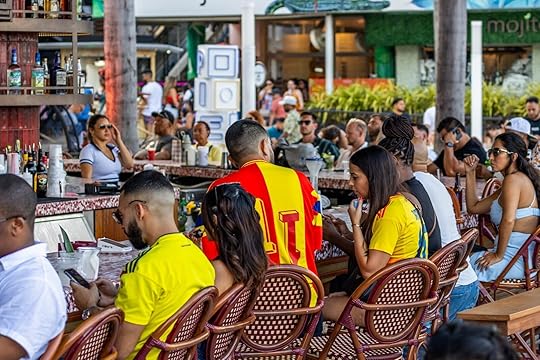
International sporting events like the FIFA World Cup bring together people from different countries and backgrounds. And if you’ve been there, you know that’s what Miami does, too. That makes the famously multicultural city a great place to follow the tournament — especially during the 2026 World Cup when Hard Rock Stadium will host seven matches between June and July, including the match that’ll decide what country takes home third place.
If you can’t get tickets to see the games unfold in person, no problem. Miami has no shortage of sports bars (some of which favor soccer) where fans flock during their regular seasons. Ever since David Beckham-founded Inter Miami debuted in 2020 — and especially after Lionel Messi was signed to the team in 2023 — Major League Soccer (MLS) pride has run deep in the city.
But The 305’s love of soccer traces back farther and extends wider than that, from the days of Inter Miami’s predecessor (Miami Fusion) to those with international allegiances, from the English Premier League to the UEFA Champions League to Copa América. Wherever your loyalties lie, here are seven of the best soccer bars in Miami for watching the World Cup.
View this post on InstagramA post shared by GRAILS MIAMI – Restaurant & Sports Bar (@grailsmiami)
Grails, in Wynwood, is among the most talked-about sports bars in Miami. In fact, it might take the number one spot. Soccer is far from the only sport you’ll see playing on the 70-plus TVs, but it’s certainly represented. In addition to watch parties for Inter Miami and high-stakes matches from the Champions League, Copa América, Premier League, and others, Grails revs up its screens for both World Cup qualifying matches and, of course, the actual tournament.
Sports are a big part of this bar’s identity, but surprisingly, that’s not its trademark. That distinction belongs to Jordans — well, kicks in general. Grails describes its indoor area as a “sneaker-themed sports lounge” with footwear collectibles displayed like artworks and even some cocktails served in ceramic shoes — including one big enough to rival any fishbowl.
Outside, there’s a big patio with string lights and lawn games where you can flex your own athletic prowess while watching your favorite soccer players do their thing. During the World Cup, fully occupied by enthusiastic fans, this outdoor viewing area is bound to be electric.
Grails: 2800 N Miami Ave, Miami, FL 33127
Fritz & Fran BierhausView this post on InstagramA post shared by FritzandFranzBierhaus (@fritzandfranzbierhaus)
This Coral Gables bierhaus (German-style beer hall) plays double duty as the go-to spot for two groups of soccer fans in Miami. The first is the Miami Red Devils, the city’s official fan club for Manchester United in the Premier League. The second (and most obvious) Fritz & Fran frequenters are those who follow Bundesliga, aka Germany’s top professional soccer league.
Even if you’re not a Bayern Munich or Eintracht Frankfurt fan, it’s hard not to love the indoor-outdoor beer garden vibes. You’ll see tons of communal tables, names like Paulaner and Köstritzer dominating the beer list, bites like bratwurst and schnitzel anchoring the food menu, and servers in dirndls (traditional Alpine dresses a la any Oktoberfest media you’ve ever seen) — that and what the bar claims is the “largest indoor screen in Miami.”
For World Cup coverage, Fritz & Fran has plenty of experience hosting watch parties for important Inter Miami matches (as well as events like an Andy Cole and Diego Forlan meet-and-greet, two former Man United players). Check the bar-restaurant’s Facebook or Instagram for updates on who’s playing and when.
Fritz & Fran: 60 Merrick Way, Coral Gables, FL 33134
American SocialView this post on InstagramA post shared by American Social Bar & Kitchen (@americansocial)
Two groups — the Miami Gooners and Miami Arsenal Supporters Club (MASC) — claim to be official supporting branches of the Premiere League’s Arsenal FC. Miami Gooners congregate at The Bar in Coral Gables on match days; MASC members head to American Social in Brickell. The latter also has a reputation for leaning into the World Cup Finals with early opening times, themed drinks, and lots of excitement.
Located in Brickell — a buzzy Miami neighborhood with high-rises, great restaurants, and rooftop bars that showcase the best of both — American Social is equal parts bar and restaurant, with a creative cocktail menu and popular happy hour. During the next World Cup, beeline to the wide-open patio to see the future champions compete in some of the tournament’s most exciting matches.
American Social: 690 SW 1st Ct, Miami, FL 33130
Lost Boy Dry GoodsView this post on InstagramA post shared by Lost Boy Dry Goods (@lostboydrygoods)
In Downtown Miami, Lost Boy is a bit classier than your average sports bar, with exposed brick walls, dark wood bistro chairs and tables, leather couches, and antique touches. Per the website, the vibe is somewhere between a classic English pub and “an old Captain’s tavern in a Colorado miner’s saloon.” It also has all the mainstays of a great dive or sports bar, however, with a pool table, darts, and a crowd that loves to root for its teams — especially if your team is Inter Miami, part of the Premier League, or is competing in the Champions League.
On the global scale, Lost Boy has a reputation for being a World Cup hub, as well. During the 2022 World Cup, the bar opened early to make sure fans had access to the action going down in Qatar at all hours — as early as 5 AM.
Lost Boy Dry Goods: 157 E Flagler St, Miami, FL 33131
Casa La RubiaView this post on InstagramA post shared by La Rubia (@larubiablondeale)
Casa La Rubia used to be called Veza Sur, and was a popular brwwing company. Recently, it rebranded with additional beers from other breweries on tap, now called Casa La Rubia. It’s a brewing company and taproom in Wynwood that’s inspired by all things Latin America, including a love of fútbol (soccer).
During La Liga’s run, roughly between August and May, Casa La Rubia is great place to catch a match between competing teams in Spain’s professional league. During the World Cup, there’s no better bar in Miami to cheer on Brazil or Argentina. Really, though, the lively spot is a good choice for fans of any national team, as it’s been known to project every single World Cup game on its outdoor patio in the past.
In addition to sportsmanship, you can enjoy a roster of the brewery’s creations, from a Latin lager or mango wheat ale to a couple of sours or a coffee porter, alongside cocktails and Peruvian-leaning fare from the on-site food truck. Stay on theme with bites like canchita (toasted corn kernels) and lomo saltado (stir-fried beef, veggies, rice, and fries) or lean into the spirit of the World Cup with fusion options like edamame with aji panka (Peruvian red pepper) or tuna tataki with panka glaze.
Casa La Rubia: 55 NW 25th St, Miami, FL 33127
Mickey Byrne’s Irish PubView this post on InstagramA post shared by Mickey Byrne's Irish Pub (@mickeybyrnesfl)
This pub in the suburb of Hollywood, Florida, is worth traveling 30 minutes north to get out of the city and into one of the Miami metro area’s most devoted soccer bars. Mickey Byrne’s is a proud Irish pub (named after a beloved Irish hurler) where menu items like bangers ‘n’ mash, fish ‘n’ chips, corned beef ‘n’ cabbage, shepherd’s pie, and, yes, Guinness, clearly plant Ireland’s green, white, and orange flag all over the establishment.
Mickey Byrne’s love of sports is one thing that transcends the Emerald Isle. In addition to broadcasting major games from the NFL, MLB, and NBA on its big screens and projectors, the pub serves as a gathering place for fans of US soccer — both the MLS (top men’s league) and the NWSL (top women’s league). Of note, Mickey Byne’s is an Inter Miami Pub Parter (a program led by the club and Heineken) meaning fans can expect deals and specials on match days.
Naturally, all that enthusiasm extends to major international events, including Champions League and World Cup matches, too.
Mickey Byrne’s: 1921 Hollywood Blvd, Hollywood, FL 33020
Black MarketView this post on InstagramA post shared by Black Market Miami (@blackmarketmia)
Black Market is a “sports bar for Miamians, by Miamians” with two locations: Downtown and Bayside. Both are good shouts for World Cup coverage. Black Market Downtown has 30-plus TVs, your choice of comfortable and casual seating, and plenty of standing room for when you’re too excited to sit. At 10,000 square feet, Black Market Bayside is a little less than twice the size. Expect robust crowds at either spot during the World Cup, with a viewing experience that’s complemented by elevated pub grub (think Wagyu smash burger and burrata salad alongside classics like wings and nachos) and cocktails, wine, beer, and seltzers. 
Black Market Downtown: 168 SE 1st St, Miami, FL 33131
Black Market Bayside: 401 Biscayne Blvd, Miami, FL 33132
Where to Eat, Play, and Stay During the 2026 Toronto World Cup Games

Toronto is Canada’s largest city, known for its economic strength, multicultural influences, and exciting urban draws. As of mid-2024, the population of the Greater Toronto Area was more than 7 million, making it not only the most populous city in Canada, but also one of the fastest-growing urban centers in all of North America. The rapid growth is fueled mostly by a steady influx of international immigrants: Toronto has the largest share of foreign-born residents of any city on the continent — which means you’ll find huge fan bases across the city for all 48 teams playing in the 2026 FIFA World Cup.
Soccer is deeply woven into Toronto’s culture, with roots stretching back 150 years. The first recorded game of “association football” in Canada was on October 21, 1876, between the Carlton Cricket Club and Toronto Lacrosse Club. Just months later, the first organized soccer body outside of Britain (the Dominion Football Association) was founded in Toronto, cementing its role as Canada’s first true soccer city.
Soccer’s popularity in Toronto grew quickly in the early 1900s, as immigrants from Europe brought with them their love for the game fueled by waves of immigrants from Britain and Europe who brought their love for the game. The Toronto & District League, founded in 1908, and the National Soccer League (NSL), established in 1926, were early competitive outlets, with clubs like Toronto Ulster United (1913-1962) achieving quite a bit of success.
Today, Toronto is home to Toronto FC, one of only three MLS teams in Canada. (Vancouver and Montreal have the other two). It’s also home to AFC Toronto, which plays in the Northern Super League, and Toronto FCII, one of the country’s best farm teams.
For East Coasters traveling to the games, the Toronto World Cup matches could be some of the most fun to attend, especially if you want to avoid the crowds of Boston and New York (as well as the heat of Atlanta and Miami). Here’s what you need to start your Toronto World Cup trip planning.
We hope you love the spaces and activities we recommend! Just so you know, Matador may collect a small commission from the links on this page if you decide to book a stay or tour. Listed prices are accurate as of the time of publication.
Sporty things to do in TorontoToronto is arguably Canada’s most cosmopolitan city, known especially well for its vibrant food scene. Most travelers gravitate toward highlights like the CN Tower’s panoramic views, seeing the historic St. Lawrence Market, and exploring the cobblestone lanes of the Distillery District. But if you’re in Toronto for the World Cup matches, consider activities with a sportier angle: catch a match at BMO Field, visit the Hockey Hall of Fame, or join fellow fans at the official FIFA Fan Festival at Fort York and The Bentway, where games will be broadcast on large screens alongside cultural performances and local food vendors.
Check out the Hockey Hall of Fame
Photo: Todamo/Shutterstock
Yes, Toronto is a soccer town — but there’s no denying it’s one of the biggest hockey towns in the world, too. The Hockey Hall of Fame was established in 1943 and relocated to Toronto in 1958, but moved to its current downtown location in 1993. It covers more than 60,000 square feet with exhibits on the sport, with 15 distinct collection areas displaying artifacts, multimedia displays, and interactive ways to explore. The Esso Great Hall (often called the “hockey cathedral,” has dozens of portraits and biographies of inductees, as well as the Stanley Cup, stored in a bank vault. Interesting exhibits include one on the evolution of the goalie mask, a close-up look at championship rings, and a replica of the Montreal Canadiens’ locker room. Tickets start at $25 Canadian, or about $20 US.
Hockey Hall of Fame: 30 Yonge St, Toronto, ON M5E 1X8
Catch a Blue Jays Game
Photo: ACHPF/Shutterstock
Catching a Toronto Blue Jays game at Rogers Centre is a quintessential city experience, with a retractable-roof stadium that keeps fans dry even in summer rain. It seats up to 45,000 fans, and tickets are accessible, starting as low as $9 for regular games. If you’re there in the summer, swing by the newly opened Corona Rooftop Patio, with lawn games and outdoor seating, or catch the views from the WestJet Flight Deck. During most baseball games, there’s live music, interactive contests, and the chance to catch a home run ball in Rogers Landing. The Blue Jays season won’t be impacted by the Toronto World Cup Games, making it an excellent way to see another sporting event in town on days where you didn’t snag soccer tickets.
Rogers Centre: 1 Blue Jays Way, Toronto, ON M5V 1J3
Hang out at the Toronto World Cup FIFA Fan Festival
Photo: Erman Gunes/Shutterstock
Toronto’s official FIFA Fan Festival for the 2026 World Cup will be at Fort York National Historic Site, running from June 11 to July 19, 2026. It’ll be completely free and open to all ages, with live broadcasts of every game, not just the Toronto World Cup matches. Though the giant screens will be the center of attention, the festival will also likely have musical performances, cultural showcases, interactive art installations, and local food vendors. The nearest TTC (public transit) stations to Fort York National Historic Site are Bathurst Station (Bloor-Danforth Line) and Bathurst St at King St West. More details will likely be announced in the coming months at the official City of Toronto’s FIFA World Cup page.
History buff? Fort York is home to Canada’s largest collection of original War of 1812 buildings with guided tours that take guests through the history of the fort, what life was like for soldiers, and why the Battle of York mattered. Tours are offered multiple times per day, though the schedule could get interupted when the FIFA Fan Festival is underway.
Fort York National Historic Site: 250 Fort York Blvd, Toronto, ON M5V 3K9
Get out on the water
Photo: Shawn.ccf/Shutterstock
The Toronto World Cup game are in the middle of summer, so it’s probably going to be hot. That makes this Airbnb Experience sunset paddling tour an inviting way to spend an afternoon. It’s a one-hour guided canoe tour of the Toronto Islands, paddling past the city’s best green spaces on a beginner-friendly route. It leaves from the Centre Island ferry dock, very close to Toronto Stadium. Participants will paddle through tranquil lagoons, past a bird sanctuary, and along a waterway with views of the islands’ flora and fauna. Along the route, the host shares stories and insights about the islands’ ecology and history. It costs $90 CAD per guest, or about $70 US, and includes all necessary equipment, though you’ll want to bring your own sunscreen and water.
Walk or run through Rouge National Urban Park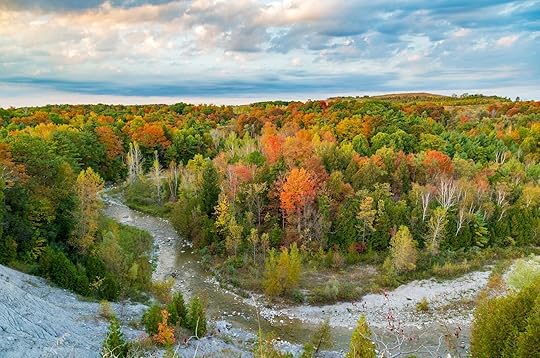
Photo: mshirani/Shutterstock
Rouge National Urban Park is Canada’s first national urban park and one of the largest in the world, covering more than 30 square miles in Toronto. Its boundaries stretch from Lake Ontario in the south to the Oak Ridges Moraine in the north, protecting wetlands, forests, meadows, and farmland. The park is home to more than 1,700 species of plants and animals and contains some of the last remaining working farms within a protected urban area anywhere in in North America. There’s a network of trails for hiking and birding, but since the Toronto World Cup games are in the summer, it’s the perfect season for paddling the park’s Rouge River, too.
The main visitor entrance is near the Toronto Zoom where you’ll find trail maps, restrooms, and parking. Admission is free.
Rogue National Urban Park: 7277 14th Ave, Markham, ON L6B 1A8
Where to eat and drink during the Toronto World Cup matchesToronto has a well-earned reputation for its excellent soccer bars, offering everything from massive screens and raucous crowds to club-specific supporters’ atmospheres. Whether you’re seeking an inclusive, international scene or a die-hard footy sanctuary, the city delivers. Here are some of the top soccer bars in Toronto and what makes them stand out for fans of the world’s most popular sport.
Scotland Yard PubView this post on InstagramA post shared by Scotland Yard | Your Neighborhood Pub (@scotlandyardtoronto)
Scotland Yard Pub is widely recognized as Toronto’s top soccer sanctuary, especially for Tottenham Hotspur supporters. It’s the official home of the Toronto Spurs and regularly full of fans. It’s a reliable spot to catch Premier League, Champions League, and international matches, and a welcoming, inclusive environment — thought perhaps not if you’re an Arsenal fan. The pub’s dedication to soccer gives it an unmatched matchday atmosphere, making it a must-visit for serious fans. It’s very close to Union Station, and has bottomless mimosa breakfasts on weekends from 9AM-1PM.
Scotland Yard Pub: 56 The Esplanade, Toronto, ON M5E 1A6
Real Sports Bar & GrillView this post on InstagramA post shared by RS (Real Sports) (@realsports)
Real Sports next to Scotiabank Arena is one of Toronto’s largest sports bars. It covers roughly 25,000 square feet and is used to having large crowds during soccer games. It has nearly 200 TVs split among several themed zones, including areas inspired by basketball, hockey, and soccer. But the biggest screen — and, supposedly, the largest of any screen in a bar in North America — is the 39-foot-wide Arena screen, in the Arena room. It ensures everyone can see the action from just about anywhere in the bar, even when it’s packed.
Real Sports Bar & Grill: 15 York St, Toronto, ON M5J 2Z2
The Dock EllisView this post on InstagramA post shared by The Dock Ellis (@thedockellis)
The Dock Ellis is the official home of Arsenal Canada’s Toronto supporters and is known for its dedicated soccer crowd, especially on Premier League matchdays. The bar offers a spartan, sports-focused setting with plenty of draft beers and the usual pub-type fare. Its reputation as a hub for Gooners (a.k.a., Arsenal football fans) and other serious soccer fans makes it a great place for anyone whose serious about watching Toronto’s World Cup games and wants to talk shop.
The Dock Ellis: 1280 Dundas St W, Toronto, ON M6J 1X7
Where to Stay for the Toronto World Cup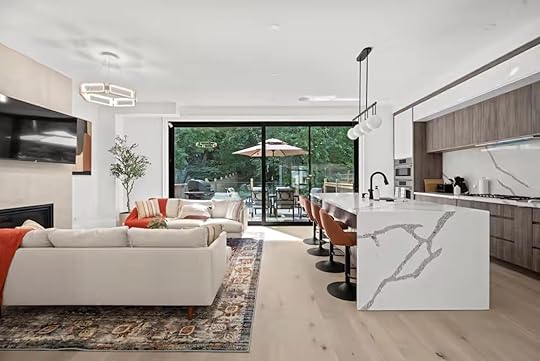
Photo: Airbnb
With BMO Field so central to the city, you can make your decision of where to stay based more on what neighborhood speaks to you, more than logistics. Summer is the busy season in Toronto, so it’s always advisable to make your lodging reservations as soon as possible.
Check out Matador‘s full guide to the best hotels near BMO Field.
This Airbnb is definitely a splurge, but it’d be a fun place to spend a few days with friends while you’re in the area for the Toronto World Cup matches. It’s just a 15-minute walk from Lake Ontario, and has five bedrooms — one of which has been turned into a game room, complete with a ping-pong table, huge couch, and a TV project. It sleeps up to 14 people and starts around $450 Canadian per night (about $350).
Book NowAffordable Airbnb with a PoolThis Airbnb is ideal for a traveling coupe, with one bedroom with lake views and access to a shared outdoor pool and sauna. It’s on the waterfront, meaning you can walk both to BMO Field for the Toronto World Cup matches, and to draws like restaurants and nightlife. It starts around $300 Canadian (about $225) in the summer of 2025, though rates could go up for summer 2026, given its great location.
Book NowHotel X TorontoYou won’t find a closer hotel to BMO Field than Hotel X Toronto, part of Hyatt Hotels. It has a spa, a huge outdoor pool, and modern rooms with plenty of space. Rates start around $240 Canadian (about $190) per night in the summer, but it’ll likely raise the rates over Toronto’s World Cup dates as it gets closer and closer to game time.
 Book NowMore like thisTravel5 Must-Do San Francisco Activities That City Experiences Tours Make Better
Book NowMore like thisTravel5 Must-Do San Francisco Activities That City Experiences Tours Make Better
High Design Meets Rugged Functionality: How CĀO Creates Travel Gear for Explorers of All Stripes
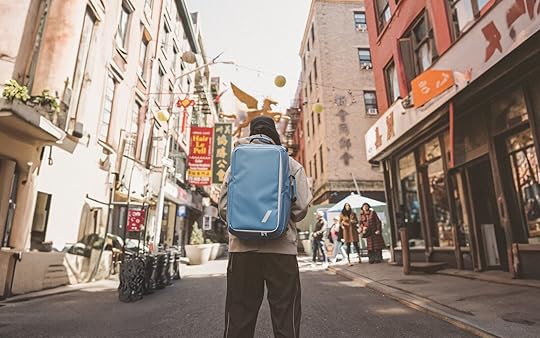
Kina Pickett knows what it takes to live a life that blends adventure and design. He grew up in Vermont, studied art in college, skied professionally around the world, and has worked with a who’s-who list of companies that encourage people to get out there — L.L. Bean, Topo Design, and Airstream, to name a few. Now he’s bringing that experience of what works, and what doesn’t work, to a brand of his own: CĀO.
“I was always caught between two worlds that I love: street style and adventure,” Pickett says, noting that art and design were things he has always felt were missing in his travel luggage and apparel. “As an athlete, once I was off the hill I was dressing completely different. I would never wear outdoor-specific clothing off the hill — it just never resonated with me.”
With CĀO, aesthetics and narrative are as built into the brand as functionality. CĀO encompasses a line of travel bags in different sizes (and in eye-catching colorways), a print product filled with the type of photography you’d spot in a indie magazine, and a storytelling ethos applied to every aspect. An apparel line is forthcoming. So, too, is a set of travel and lifestyle gear for kids — Pickett and his wife Nellie spent months crisscrossing the United States in an Airstream with their kids, Ashur and Story.

Photo: CĀO
CĀO gets its name from the Portuguese explorer Diogo Cão. Pickett gave the name a slight shift in pronunciation: K.O., like knockout. Product names across the brand reference other explorers throughout history, with a custom touch. The Skylax bag, for example, comes from Scylax of Caryanda, a Greek explorer and writer who lived during the 6th and 5th centuries BCE.
CĀO developed fast. The process started about a year and a half ago, and Pickett and his business partners (including Roddy Darcy, an outdoor industry veteran who worked on innovation and design at Amer Sports) used an agile design system to move the first prototypes through to the final products.
“The idea of CĀO as a brand had been percolating for a while, and the desire to create that brand came from a life lived full of juxtapositions,” Pickett says. “The frustration that I was always struggling with was pretty simple: When it comes to the outdoor space, where was the art and design?”
I caught up with Pickett ahead of the full brand launch to learn more about his inspirations, what makes CĀO stand out, and why storytelling is such an important component to a travel brand.

Photo: CĀO
This interview has been edited for length and clarity.
Matador Network: What was the initial spark that led you to create CĀO? Was there a single moment that crystallized your desire to start the brand?Kina Pickett: I have always wanted to start a brand. It’s something that has been in the back of my head for years. When I was running my media company with my business partner we were constantly working for brands helping them create beautiful stories and narratives around product and lifestyle, I always wondered what that would be like if I ever had the chance to do that for my own brand. The moment happened when my now business partner presented me with an incredible opportunity to do just that, and I jumped.
I just never understood why brands were so based in verticals, and lacking good design — and when I say design I am alluding to hints taken from streetwear and fashion. I just never understood why things couldn’t be both technical and highly functional, while having a broader use case of functionality that worked in a variety of environments, from mountain to city.
The other factor that I have always been interested is the completely different mindset of Gen Z, and how that was going to overwhelmingly affect the direction of this manufactured construct known as “The Outdoors.” This generation was born digital, they don’t think in verticals, and they will choose experiences over most anything. I knew that if I started a brand I had to pay close attention to this new mindset.

Photo: CĀO
Tell me more about the overall vision of what you’re including at launch.The CĀO brand is centered around exploration. I used to always visualize exploration as a mission-driven thing that typically had a goal in mind, more like an expedition. When I started to unpack the definition of exploration, I realized that word had been misunderstood in my mind. The definition of exploration is “the action of traveling in or through an unfamiliar area in order to learn more about in.”
It dawned on me that as a society we were decent at the first part of the definition, but lacking on the second part. I think we become better people when we take the time to understand culture, environment, and feeling. In the end, exploration is all about finding a feeling of awe. But as humans we need to be more intentional about slowing down to feel and immerse ourselves in the moment of it all, not just snap a pic for IG and moving on, but slow down to savor these moments.
In the end that’s what life is, just a series of moments. If you are intentional about finding them, I believe you will live a better life. Thus the brand description, “Goods for the intentional explorer,” and the tag line, “Explorers of all stripes.” (I owe the tag line to my dear friend Ben Bryan.)
What was the first product you pursued, and why did you start there?I am a ‘70s baby. I have always been obsessed with everything from that era: music, architecture, cars, design — all of it. I remembering doing some research and looking at these old airline bags, like the old TWA bags, and thinking, “These are so sick!!! What would these look like in a more modern silhouette?”
Also, I was completely fascinated by old Adidas gym bags, and I still am. I played soccer at the national level and it has always been a part of my life. You will see a ton of vintage sport aesthetic coming through in the design because of this. So the first bag I designed was the Gama Air Satchel, which is a nod to the old airline bags and the old gym bags from the ‘70s.

Photo: CĀO
What were your other major inspirations for the aesthetics?I pull inspiration from so many places. I am a complete visual thinker, and it’s kind of how I see the world. If I can’t figure out how to say something visually, it’s almost lost on me. Some of my big inspirations come from the golden age of travel, when people dressed up to travel and smoked on planes (what the hell were we thinking?) — vintage St. Tropez, the Salton Sea, etc.
My other deep visual inspiration is vintage sport, especially European. (I was lucky enough to play soccer in England for a hot minute.)
I think the the visual aesthetic comes through in the bag design. The actual visual language of the photography is all about juxtaposition: how can I show two completely different styles and smash them together, or how can I take a person and place them into a landscape that they don’t look like they belong but it all seems to work. I love the idea of looking at something and not understanding it, but subconsciously loving it. The brand is just that: taking the style and design aesthetics from streetstyle and slamming them into this man-made construct we call the “Outdoor Space.”
How did you approach the functionality and materials?I think the biggest change form the early prototypes was fabric and color palette (which, by the way, is an incredibly difficult thing as it turns out).
The fabric we use made a ton of sense to me both visually and technically. The fabric kind of reminds me of the same fabric you would find on an old Adidas gym bag from the ‘70s, but it’s updated and 100-percent waterproof. From a color perspective, it also is very interesting. At the same time, the fabric of the bags is incredibly functional, durable, and easy to clean, so it works in all environments.

Photo: CĀO
You describe CĀO as a modern exploration brand. How would you define that?Exploration to me is so many things. I think when that term is thrown around in the outdoor space, our kids immediately go to man on top of mountain. But for me, exploration is so much more. It can be music, food, art, design, photography, style — the idea of exploring in these terms is totally different, but that’s the entire point.
Modern exploration to me is doing things and seeing things you have never seen or done, and making them familiar. Exploration can be as easy as listening to a new genre of music, or eating food you have never tried before. The entire point is to try something new and focus on the moment and how it feels. To me, that is the definition of exploration, and CĀO embodies just that. I think the thing that sets CĀO apart is this simple idea of having both design and functionality in the same product.
Can you walk me through the design inspiration behind one or two standout pieces in the product line?We talked about he Gama Air Stachel, but another standout piece is the Skylax. I always wanted a weekend bag that was super stylish but also incredibly functional — something I could take on a long weekend to the coast, or as carry-on across the pond to Europe. But when I got to my destination the bag had to perform. Like I could actually hike down to the ocean in a rain storm and everything would still be dry. I wanted to create a hybrid bag that could exist in multiple environments, look the part, and stand out from a design perspective, but still perform when needed. I love the simple lines of the Skylax, it just looks good. I always struggled to find that bag when I was traveling.
How did your extensive experience with immersive family travel influence your designs?Traveling with my family during that two-year window during covid had a massive influence on my understanding of product design. I created a bag based off of that trip called the Dias, which is just a big carryall. It’s a life bag big enough to fit all your kids shit into and just go — beach, desert, mountain, skiing, soccer weekend, just grab your shit and go. It’s the perfect bag to go from the house to the truck, and then from the truck to any environment. The thinking behind that bag came directly from the time on the road with my family — I wish I had had it back then!
Also, we have an entire kids line coming as well, including backpacks and lunch boxes.

Photo: CĀO
You’re an incredible visual storyteller. How has that side of your background played into creating CĀO?My past life as a visual storyteller for brands had a massive, massive impact on how we built CĀO.
When I was working for all these brands, I witnessed first-hand how content was the last thing brands would think about before launching a product. It never made any sense to me. I could never understand how brands would release incredible product, but the visual storytelling would be sub par. In my mind, the quality of your visuals, both motion and stills, have to be the same quality of the product you put out into the world for there to not be a massive disconnect.
We have built CĀO from that perspective. I want to visually create narratives people can feel, all about the moments of exploration and chasing that feeling of awe.
This is very exciting for me because I have worked on so, so many brand campaigns that weren’t mine. Now it’s my time, and I get to do it with my own brand. 
May 29, 2025
The Best Hotels Near Vancouver’s BC Place Vancouver for Soccer Fans

When the World Cup rolls into Vancouver next summer, BC Place will host seven games, including two featuring the Canadian national team, making it one of the tournament’s most exciting hubs. The downtown stadium’s sweeping roof and waterfront skyline views might be the first thing to wow visitors, but what really makes this venue a fan favorite is how easy it is to reach — especially if you’re staying downtown.
BC Place sits right on the edge of Vancouver’s compact, walkable downtown, meaning you can stroll from your hotel to the gate in about the time it takes Alphonso Davies to sprint down the wing. And if you’re coming in from the airport or staying farther out, the SkyTrain makes it easy — with lines running straight into downtown and dropping you just a few blocks from the stadium. Like Toronto’s BMO Field, BC Place is one of the best-located stadiums in the tournament for fans, with plenty of great cafes, breweries, and late-night spots in the surrounding blocks.
Whether you can splurge on a luxurious suite with stadium views, a hotel with all the amenities just steps from the gates, or a boutique spot with character, these are the best hotels near BC Place for fans coming to Vancouver for the biggest tournament in soccer.
We hope you love the hotels near BC Place stadium, Vancouver we recommend! Just so you know, Matador may collect a small commission from the links on this page if you decide to book a stay. Listed prices are accurate as of the time of publication.
The best hotels near BC PlaceGeorgian Court Hotel, WorldHotels Elite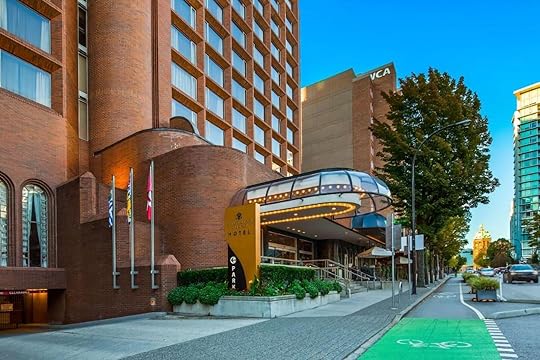
Photo: Booking
Location: 773 Beatty St, VancouverHow far from the stadium: Two-minute walkPrice: From $151 per nightThis hotel is about as close to BC Place as it gets. It’s right across the street, and if your room faces the stadium, you’ll see the match day crowds gathering. The Georgian Court sits right in Vancouver’s entertainment district, within easy walking distance of both Rogers Arena and the bars and restaurants in Yaletown. The 180 rooms were recently refreshed in a palette of calm greys and charcoals, with spacious beds, and extras like yoga mats, and espresso machines in the suites. There’s a small gym, a sauna, and a whirlpool on site, and Frankie’s — the Italian restaurant and jazz venue next door — is a popular spot after games. Staff are friendly and efficient, and the overall experience is comfortable, central, and dependable.
BookHampton Inn & Suites, by Hilton — Vancouver Downtown
Photo: Booking
Location: 111 Robson St, VancouverHow far from the stadium: One-minute walkPrice: From $155 per nightThe Hampton Inn sits just across Robson Street from BC Place, putting you within quick reach of the stadium and the rest of downtown. Rooms are simple but have everything you need between matches, including a mini fridge, microwave, and a complimentary breakfast buffet that starts early. There’s a rooftop whirlpool with skyline views, a small gym, and you’re a short walk from the restaurants and bars in Gastown. It’s not flashy, but for location and value, this one’s tough to beat. Rooms will be in high demand, so don’t count on a last-minute booking.
BookHilton Vancouver Downtown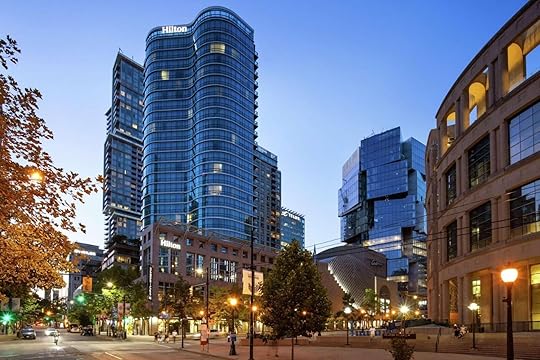
Photo: Booking
Location: 433 Robson St, VancouverHow far from the stadium: Six-minute walkPrice: From $287 per nightJust past the edge of Yaletown, the Hilton Vancouver Downtown is a six-minute walk from BC Place, with direct routes down Robson Street that put you at the turnstiles in no time. Rooms are clean and modern, and you can opt for a one-bedroom suite if you want a bit more space. There’s a year-round rooftop pool — which will be popular during the fixtures in the summer heat — plus a small fitness center, steam room, and sauna. On the ground floor, Hendricks Resto-Lounge serves a mix of crowd-pleasers: steak and frites, burgers, club sandwiches, and a nice cocktail menu. With Yaletown’s dining scene and Robson Street’s shopping just minutes away, you’ll also have plenty to do before and after the match.
BookTraveling to the World Cup? Check out Matador’s World Cup accommodations guides: The Best Hotels Near Toronto’s BMO Field for Soccer Fans The Best Hotels Near Monterrey’s Estadio BBVA for Soccer Fans The Best Hotels Near Atlanta’s Mercedes-Benz Stadium for Soccer Fans The Best Hotels Near LA’s Rose Bowl Stadium and SoFi Stadium for Soccer Fans The Best Hotels Near Miami’s Hard Rock Stadium for Soccer Fans The Best Hotels Near New Jersey’s MetLife Stadium for Soccer Fans The Best Hotels Near Philadelphia’s Lincoln Financial Field for Soccer Fans The Best Hotels Near Boston’s Gillette Stadium for Soccer Fans The Best Hotels Near Seattle’s Lumen Field for Soccer Fans The Best Hotels for Visitors Attending the Dallas 2026 World Cup Games The Best Hotels Near Houston’s NRG Stadium for Soccer Fans The Best Hotels Near Arrowhead Stadium in Kansas City for Soccer Fans The Best Hotels Near the Bay Area’s Levi’s Stadium for Soccer Fans The Best Hotels Near Estadio Azteca in Mexico City for Soccer Fans The Best Soccer-Themed Airbnbs for a World Cup Watch Party JW Marriott Parq Vancouver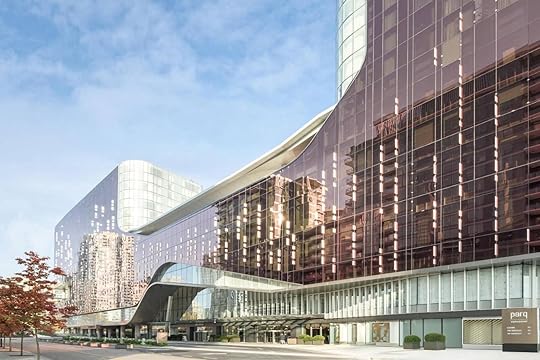
Photo: Booking
Location: 39 Smithe St, VancouverHow far from the stadium: Five-minute walkPrice: From $346 per nightFive minutes on foot from BC Place, JW Marriott Parq Vancouver puts you close enough to hear the crowd before kickoff. It’s part of a larger complex with multiple restaurants, a spa, a rooftop hot tub, and a garden deck lined with 200 pine trees and plenty of seating. Rooms are bright and well-equipped, with blackout curtains, Molton Brown toiletries, and Illy espresso machines. Many overlook the stadium’s light-changing roof or have partial views of False Creek. On the lobby level, Honey Salt serves regional comfort food — BC steelhead, roast chicken, and vegetarian mains — in a casual space popular with both locals and travelers. Upstairs, the D/6 Lounge offers craft cocktails and city views, with patio that will be popular in the summer sun.
BookL’Hermitage Hotel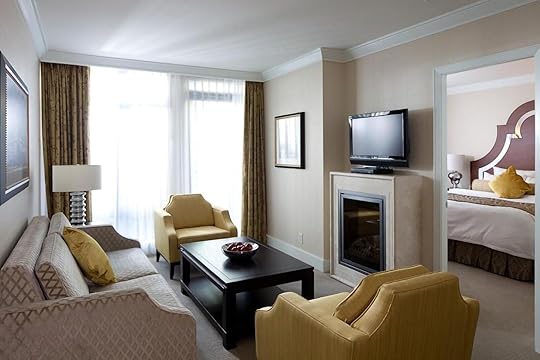
Photo: Booking
Location: 788 Richards St, VancouverHow far from the stadium: Eight-minute walkPrice: From $208 per nightA few blocks from BC Place, L’Hermitage feels more personal than most downtown hotels. The boutique property has just 60 rooms, all with spacious layouts and stylish decor, featuring king-size beds, Nespresso machines, and floor-to-ceiling windows. The fifth-floor terrace has a heated lap pool and hot tub with loungers, and L’Orangerie — the café-style lounge — serves breakfast until noon and a small menu into the evening. If you’re staying through multiple fixtures, check out one of the larger suites, which come with kitchen and laundry facilities. Overall, if you’re looking for something more upmarket but not pretentious, close to the stadium but off the party path, this is one to bookmark.
BookRosedale on Robson Suite Hotel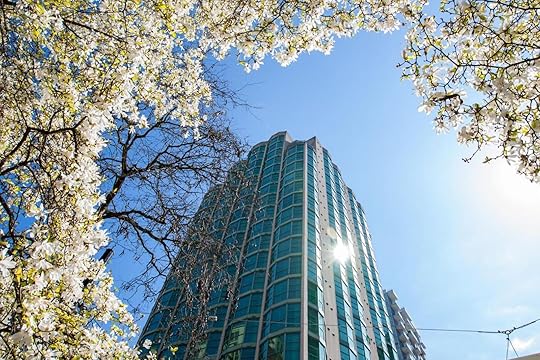
Photo: Booking
Location: 838 Hamilton St, VancouverHow far from the stadium: Four-minute walkPrice: From $178 per nightIf you’re looking for a suite-style stay with a kitchen and easy access to BC Place, Rosedale on Robson delivers. It’s a four-minute walk to BC Place. Every suite includes a kitchenette with a stove, oven, and fridge — useful if you’re staying a few days or traveling with a group. There’s also an indoor lap pool, hot tub, sauna, and a basic gym. Some rooms come with balconies or harbor views, and the higher floors tend to be quieter if you want to avoid street noise. Rosie’s, the on-site bar and grill, serves casual pub food and stays open late enough to catch highlights over a beer. It’s not flashy, but for the price and location, it’s a reliable option with the bonus of apartment-style amenities.
BookSmithe House
Photo: Booking
Location: 225 Smithe St, VancouverHow far from the stadium: Five-minute walkPrice: From $253 per nightSmithe House is a full apartment-hotel setup five minutes from BC Place, well-positioned for both match days and everything happening in downtown Vancouver. It’s a little more expensive than Rosedale, but you get way more for your dollar and it’s more modern and stylish. The building sits in the Yaletown-Cambie corridor, close to restaurants, cafes, and the seawall. Each unit includes a kitchen, in-suite laundry, and extras like a smart TV, Tallu & Co. bath products, locally roasted coffee, and a digital guest guide with neighborhood tips. Some have sofa beds and board games if you’re traveling with others or just want a night in between games. There’s a gym on site, contactless check-in, and pet-friendly policies. It’s apartment living with hotel perks and it’s one of the better-equipped spots near the stadium if you’re staying more than a night or two.
BookThe St. Regis Hotel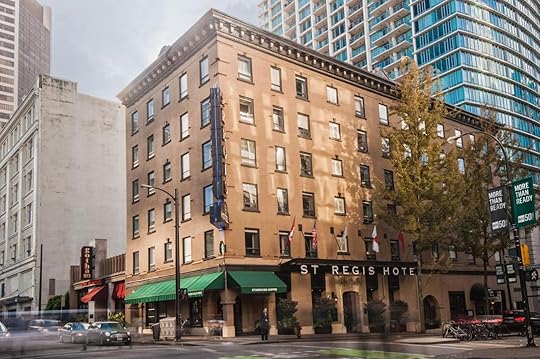
Photo: Booking
Location: 602 Dunsmuir St, VancouverHow far from the stadium: 15-minute walkPrice: From $399 per nightThe St. Regis offers 65 rooms across six floors in a 1913 heritage building. About a decade ago, it underwent a $12 million renovation that transformed it into one of downtown’s most reliable boutique stays. It’s a 15-minute walk to BC Place, with easy access to Granville Street, Gastown, and the city’s biggest retail corridors. Rooms are comfortable and well-appointed, with L’Occitane toiletries and updated bathrooms. Breakfast is included, and you can grab excellent pastries at Beaucoup Bakery or settle in at Gotham Steakhouse for classic cuts, seafood, live jazz in the lounge, and a garden patio open in summer. Service is excellent, the location central, and the overall feel is luxe without being stuffy.
Bookthe DOUGLAS, Autograph Collection
Photo: Booking
Location: 45 Smithe St, VancouverHow far from the stadium: Six-minute walkPrice: From $256 per nightThe DOUGLAS is part of the Parq Vancouver complex, just a six-minute walk from BC Place. The hotel is known for its Pacific Northwest–inspired interior design — including a 25-foot Douglas fir encased in glass at the sixth-floor check-in and warm wood paneling throughout the common areas. Rooms are comfortable and minimalist, with custom furnishings and floor-to-ceiling windows; some suites, like The Den, offer split-level layouts with a pool table and a lounge-style seating area. You’ll have access to Parq’s best dining without even leaving the building — The Victor, just off the lobby, serves steak, seafood, and ice-cold martinis with downtown views, while D/6 Lounge one floor up draws a weekend crowd with DJs, cocktails, and one of the city’s best patios. And chances are, the complex will be hosting themed events in the lead-up to and during match days. If you’re using points or planning to splurge during the World Cup, this is one of the best-located luxury stays in the city. 
Matador Network's Blog
- Matador Network's profile
- 6 followers



